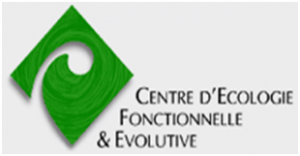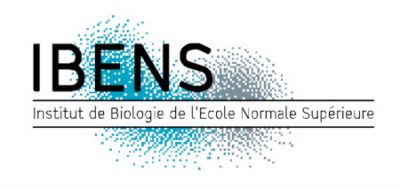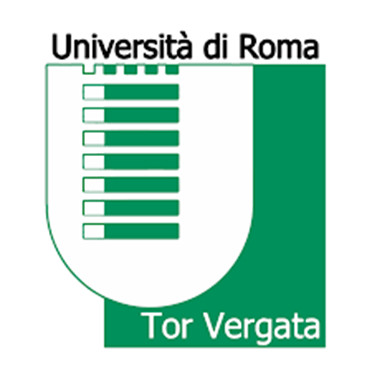Institutions
1. Partner institutions
Université Grenoble Alpes
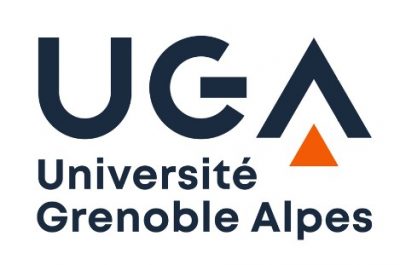 Since January 1, 2020, all of the public higher education forces at the Grenoble Alpes site have been brought together in a single experimental public establishment called “Université Grenoble Alpes”. Anchored on its territory, multidisciplinary and open to the international, the new university brings together the grandes écoles Grenoble INP, Sciences Po Grenoble and the National School of Architecture of Grenoble, the components of the former Université Grenoble Alpes and the University Community Grenoble Alpes. Its training offer covers all disciplinary fields: Arts, letters, languages; Law, economics, management; Humanities and Social Sciences ; Science, technology, health. The national research organizations CEA, CNRS, Inria and Inserm are closely associated with it to develop a common policy in research and development on an international scale. Relations with INRAE, IRD and CHU Grenoble Alpes are also strengthened. The integration of higher education and research is based on the prestigious IDEX label “University of Grenoble Alpes: university of innovation”.
Since January 1, 2020, all of the public higher education forces at the Grenoble Alpes site have been brought together in a single experimental public establishment called “Université Grenoble Alpes”. Anchored on its territory, multidisciplinary and open to the international, the new university brings together the grandes écoles Grenoble INP, Sciences Po Grenoble and the National School of Architecture of Grenoble, the components of the former Université Grenoble Alpes and the University Community Grenoble Alpes. Its training offer covers all disciplinary fields: Arts, letters, languages; Law, economics, management; Humanities and Social Sciences ; Science, technology, health. The national research organizations CEA, CNRS, Inria and Inserm are closely associated with it to develop a common policy in research and development on an international scale. Relations with INRAE, IRD and CHU Grenoble Alpes are also strengthened. The integration of higher education and research is based on the prestigious IDEX label “University of Grenoble Alpes: university of innovation”.
2. Authors’ reference institutions
Agroécologie – Dijon
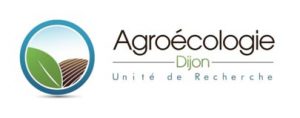 The Dijon Agroecology Research Unit brings together researchers and research professors from INRA, the University of Burgundy and AgroSup Dijon. This UMR is the result of the merger of several INRA research units focused on Microbiology and Microbial Ecology of Soils, Genetics and Crop Plant Improvement, Ecology and Weed Control in Cultivated Systems, Plant Pathology. The research developed within the UMR aims to advance the knowledge of biotic interactions (in particular plant-plants and plant-microorganisms) within agrosystems in order to design innovative crop systems that respect the environment… This research is conducted at different levels of integration (from molecule to community) and spatio-temporal scales (microcosm, plot, landscape, crop cycle, rotation, etc.). They implement complementary expertise in the fields of agronomy, ecology, biology, physiology and ecophysiology, genetics, microbiology, modelling. The unit is structured into 4 poles: (i) Sustainable management of weeds, (ii) Genetic and environmental determinants of plant adaptation, (iii) Mechanisms and management of plant-microorganism interactions, (iv) Soil biology and ecosystem functions.
The Dijon Agroecology Research Unit brings together researchers and research professors from INRA, the University of Burgundy and AgroSup Dijon. This UMR is the result of the merger of several INRA research units focused on Microbiology and Microbial Ecology of Soils, Genetics and Crop Plant Improvement, Ecology and Weed Control in Cultivated Systems, Plant Pathology. The research developed within the UMR aims to advance the knowledge of biotic interactions (in particular plant-plants and plant-microorganisms) within agrosystems in order to design innovative crop systems that respect the environment… This research is conducted at different levels of integration (from molecule to community) and spatio-temporal scales (microcosm, plot, landscape, crop cycle, rotation, etc.). They implement complementary expertise in the fields of agronomy, ecology, biology, physiology and ecophysiology, genetics, microbiology, modelling. The unit is structured into 4 poles: (i) Sustainable management of weeds, (ii) Genetic and environmental determinants of plant adaptation, (iii) Mechanisms and management of plant-microorganism interactions, (iv) Soil biology and ecosystem functions.
Institut National de Recherche pour l’agriculture, l’alimentation et l’environnement (INRAE)

The National Research Institute for Agriculture, Food and the Environment (INRAE) was born from the merger of IRSTEA (National Research Institute in Science and Technology for the Environment and Agriculture) and the INRA (National Institute of Agronomic Research) on January 1, 2020. Thanks to the complementarity of disciplines and both technological and scientific skills present within the two scientific structures, INRAE carries out research activities to meet the societal issues such as food and nutritional security, the transition of agriculture, the management of natural resources and ecosystems, the erosion of biodiversity, the circular economy and natural risks. The RECOVER joint research unit, between INRAE and the University of Aix-Marseille, has a scientific project focused on natural risks and the functioning of ecosystems. This involves, on the one hand, i) developing knowledge on the risks associated with fires, hydrology, hydraulic structures, as well as decision support in this area, and on the other hand ii) d ” study the dynamics of aquatic and forest ecosystems under the constraint of global change, the problem of ecosystem restoration and develop tools and methods for assessing the state of ecosystems. Within RECOVER, the risks associated with hydraulic structures are approached from the point of view of geomechanics in the G2DR team by relying both on experimentation (in the laboratory and in situ) and on modeling, scale of the material as that of the structure. For more information: https://www6.paca.inrae.fr/recover/
Aix Marseille Université
 Aix-Marseille University is today the largest French-speaking university. It has 74,000 students in initial and continuing training and 8,000 staff. All fields of knowledge are taught: arts, humanities, languages and social sciences, law and political science, economics and management, health, science and technology. Bachelor, master and doctoral degrees are awarded, but also university technology degrees, engineering degrees, health degrees, as well as university degrees. The quality of student life in our university, a condition for growth and success, is a concern of our university community, which wishes to offer each student the best possible working conditions, sports and cultural life. Aix-Marseille University brings together 130 research structures, most often in partnership with national research organisations. Five main areas are mainly invested: energy, environmental and universe sciences, life and health sciences, advanced sciences and technologies, and human and social sciences. Transdisciplinarity and the promotion of knowledge are the major axes of development of Aix-Marseille University, a university with international ambition and rooted in its territory.
Aix-Marseille University is today the largest French-speaking university. It has 74,000 students in initial and continuing training and 8,000 staff. All fields of knowledge are taught: arts, humanities, languages and social sciences, law and political science, economics and management, health, science and technology. Bachelor, master and doctoral degrees are awarded, but also university technology degrees, engineering degrees, health degrees, as well as university degrees. The quality of student life in our university, a condition for growth and success, is a concern of our university community, which wishes to offer each student the best possible working conditions, sports and cultural life. Aix-Marseille University brings together 130 research structures, most often in partnership with national research organisations. Five main areas are mainly invested: energy, environmental and universe sciences, life and health sciences, advanced sciences and technologies, and human and social sciences. Transdisciplinarity and the promotion of knowledge are the major axes of development of Aix-Marseille University, a university with international ambition and rooted in its territory.
Binzhou Institute of Advanced Technology
 Binzhou Institute of Advanced Technology, supported by the Fortune 500 company Shandong Weiqiao Venture Group, addresses major national technological challenges, new industrial development opportunities, and Binzhou’s “dual-type” city core needs. It serves “Sci-Tech Binzhou” and “Tech Weiqiao” with principles of being small in scale, strong in investment, elite, and specialized. It aims to create a new R&D institution integrating “science, education, innovation, and industry.” The institute focuses on high-precision and specialized disciplines for national strategic demands and local industry revitalization, structuring its disciplines and professional directions around leading industries. Through subordinate research institutes and innovation centers, it forms an integrated professional cluster, committed to attracting high-level talents and promoting the collaborative development of industry, academia, research, and application.
Binzhou Institute of Advanced Technology, supported by the Fortune 500 company Shandong Weiqiao Venture Group, addresses major national technological challenges, new industrial development opportunities, and Binzhou’s “dual-type” city core needs. It serves “Sci-Tech Binzhou” and “Tech Weiqiao” with principles of being small in scale, strong in investment, elite, and specialized. It aims to create a new R&D institution integrating “science, education, innovation, and industry.” The institute focuses on high-precision and specialized disciplines for national strategic demands and local industry revitalization, structuring its disciplines and professional directions around leading industries. Through subordinate research institutes and innovation centers, it forms an integrated professional cluster, committed to attracting high-level talents and promoting the collaborative development of industry, academia, research, and application.
Bureau de Recherches Géologiques et Minières (BRGM)
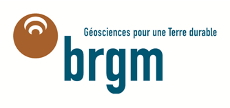 BRGM or Bureau de Recherches Géologiques et Minières is the French public institution of reference in earth sciences applications to manage resources and risks of the soil and subsoil. It constitutes the French National Geological Survey. Its activity is divided into 5 missions (scientific research, public policy support, international cooperation, mining safety and training) and 10 major areas of geosciences (geology, mineral resources, geothermal energy, CO2 geological storage, risks, after-mining, water, environment and environmental technologies, laboratories and experimentation, information systems).
BRGM or Bureau de Recherches Géologiques et Minières is the French public institution of reference in earth sciences applications to manage resources and risks of the soil and subsoil. It constitutes the French National Geological Survey. Its activity is divided into 5 missions (scientific research, public policy support, international cooperation, mining safety and training) and 10 major areas of geosciences (geology, mineral resources, geothermal energy, CO2 geological storage, risks, after-mining, water, environment and environmental technologies, laboratories and experimentation, information systems).
CEA (Commissariat à l’énergie atomique et aux énergies alternatives)
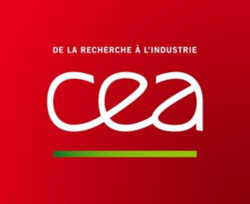
Within the Military Applications Department (DAM) of the CEA, the Analysis, Surveillance and Environment Department (DASE) relies, in the field of geophysics, on data acquired in various technologies (seismic, infrasound, hydroacoustics) to accomplish its missions. These concern the analysis of continuous seismic activity as part of its mission to alert authorities in the event of foreign nuclear tests, strong earthquakes and tsunamis. For example, the seismic networks of metropolitan France and French Polynesia maintained since the 1960s provide the basic data necessary to alert the authorities in the event of earthquakes and tsunamis.
The expertise acquired in this field is reflected in the tsunami warning centers operational at CEA: the National Tsunami Warning Center (Cenalt), for tsunamis in the western Mediterranean and Atlantic that could impact the French coasts, and the Center Polynesian Tsunami Prevention (CPPT) in Tahiti, for Pacific tsunamis that may impact Polynesian coasts.
DASE’s activities in geophysics are carried out within an international framework, with the Comprehensive Nuclear-Test-Ban Treaty Organization (CTBTO), and, for tsunamis, with the Intergovernmental Oceanographic Commission (IOC) of Unesco.
Centre de Recherche sur la Terre et le Climat Georges Lemaître
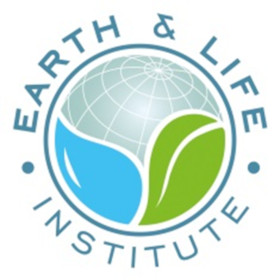 The Georges Lemaître Centre for Earth and Climate Research is part of the Earth and Life Institute of the Catholic University of Louvain in Louvain-la-Neuve. This centre succeeded the Institut d’Astronomie et de Géophysique Georges Lemaître, created in 1965 under the aegis of Monsignor Georges Lemaître, father of the Big Bang theory. The members of the Centre and the Institute conduct research in the various orientations of Earth, Space and Environmental Sciences and participate in the teaching of these disciplines. Most of the Centre’s staff are specialists in climate modelling. Their research focuses on the astronomical theory of paleoclimates and, in particular, on the modelling of glacial-interglacial cycles and warm climates. They also study the climate of recent millennia, the impact of human activities on recent and future climate, and the predictability of climate on seasonal to decadal time scales. They benefit from close collaboration with the Royal Observatory of Belgium, the Royal Meteorological Institute of Belgium and the Royal Institute for Space Aeronomy of Belgium.
The Georges Lemaître Centre for Earth and Climate Research is part of the Earth and Life Institute of the Catholic University of Louvain in Louvain-la-Neuve. This centre succeeded the Institut d’Astronomie et de Géophysique Georges Lemaître, created in 1965 under the aegis of Monsignor Georges Lemaître, father of the Big Bang theory. The members of the Centre and the Institute conduct research in the various orientations of Earth, Space and Environmental Sciences and participate in the teaching of these disciplines. Most of the Centre’s staff are specialists in climate modelling. Their research focuses on the astronomical theory of paleoclimates and, in particular, on the modelling of glacial-interglacial cycles and warm climates. They also study the climate of recent millennia, the impact of human activities on recent and future climate, and the predictability of climate on seasonal to decadal time scales. They benefit from close collaboration with the Royal Observatory of Belgium, the Royal Meteorological Institute of Belgium and the Royal Institute for Space Aeronomy of Belgium.
Centre d’Écologie Fonctionnelle et Évolutive (CEFE) – Montpellier
Created in 1961, the Centre d’Études Phytosociologiques et Écologiques de Montpellier became the Centre d’Écologie Fonctionnelle et Évolutive (CEFE) in 1988. The laboratory is organized into four scientific departments (Evolutionary Ecology, Biodiversity and Conservation, Functional Ecology and Interactions, Ecology and Societies). These departments are supported by common technical platforms. Four transversal themes coordinate CEFE’s scientific contribution to the major international themes of ecological research:
- Human action, anthropized systems and conservation ecology. 2. Adaptive value of life history traits in the presence of constraints. 3. Role of biodiversity in ecosystem functioning. 4. Global changes and ecosystem functioning.
The laboratory’s work is carried out in a context of evolutionary biology and ecology and focuses in particular on the dynamics of adaptation in a heterogeneous environment in space and time. They also aim to provide answers to questions about biodiversity management and conservation. Much of the research focuses on Mediterranean and tropical ecosystems. The objective is to establish scenarios for the evolution of ecological systems and strategies for their conservation, restoration or rehabilitation.
Centre d’Écologie et des Sciences de la Conservation – MNHN
 CESCO is interested in biodiversity conservation, mobilizing ecological and evolutionary approaches, as well as interfaces with social sciences (political science, management science and psychology). The URBA team develops action-research projects to meet a major societal demand for knowledge and management of biodiversity in urban areas. Its objective is to identify the mechanisms at work in the installation and the future of nature in the city in order to facilitate the emergence of ecological urban planning.
CESCO is interested in biodiversity conservation, mobilizing ecological and evolutionary approaches, as well as interfaces with social sciences (political science, management science and psychology). The URBA team develops action-research projects to meet a major societal demand for knowledge and management of biodiversity in urban areas. Its objective is to identify the mechanisms at work in the installation and the future of nature in the city in order to facilitate the emergence of ecological urban planning.
Centre d’études et d’expertises sur les risques, l’environnement, la mobilité et l’aménagement
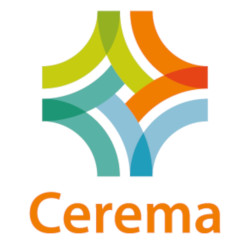 CEREMA is the public reference institution for developing and capitalising on public expertise in the fields of spatial planning, territorial cohesion and ecological and energy transition. It offers unique expertise in the fields of mobility, transport infrastructure, urban planning and construction, resource conservation, risk prevention, road and maritime safety and the ability to integrate these different skills in the construction of territorial projects. As a centre of multidisciplinary scientific and technical resources and expertise, it supports the development, implementation and evaluation of public policies at both national and local levels. It provides direct support to government services, local authorities and companies (pre-AMO, AMO, specific operational missions, etc.). It develops, experiments and disseminates innovative solutions. With more than 2800 agents throughout the metropolitan area and a historical knowledge of local issues and contexts, CEREMA is resolutely committed to the challenge of sustainable development of territories, to develop the public policies of tomorrow.
CEREMA is the public reference institution for developing and capitalising on public expertise in the fields of spatial planning, territorial cohesion and ecological and energy transition. It offers unique expertise in the fields of mobility, transport infrastructure, urban planning and construction, resource conservation, risk prevention, road and maritime safety and the ability to integrate these different skills in the construction of territorial projects. As a centre of multidisciplinary scientific and technical resources and expertise, it supports the development, implementation and evaluation of public policies at both national and local levels. It provides direct support to government services, local authorities and companies (pre-AMO, AMO, specific operational missions, etc.). It develops, experiments and disseminates innovative solutions. With more than 2800 agents throughout the metropolitan area and a historical knowledge of local issues and contexts, CEREMA is resolutely committed to the challenge of sustainable development of territories, to develop the public policies of tomorrow.
Centre de Droit Public et Privé des Obligations et de la Consommation
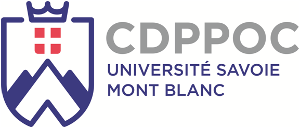 Based in Chambéry, the CDPPOC is the Centre de Droit Public et Privé des Obligations et de la Consommation of the Faculty of Law of the Université Savoie Mont Blanc (EA 4143). The legal topics of the CDPPOC are liability law, contract law, consumer and public service user protection law, competition and market law, mountain law, urban planning law, legal theory and legal history. The centre is associated with the Masters of the Faculty of Law and the Doctoral School “Science and Engineering of Environmental Systems and Organisations” of the University of Savoy.
Based in Chambéry, the CDPPOC is the Centre de Droit Public et Privé des Obligations et de la Consommation of the Faculty of Law of the Université Savoie Mont Blanc (EA 4143). The legal topics of the CDPPOC are liability law, contract law, consumer and public service user protection law, competition and market law, mountain law, urban planning law, legal theory and legal history. The centre is associated with the Masters of the Faculty of Law and the Doctoral School “Science and Engineering of Environmental Systems and Organisations” of the University of Savoy.
Centre Européen de Prévision Météorologique à Moyen Terme (CEPMMT)
![]() The European Centre for Medium-Range Weather Forecast (ECMMMT), or European Centre for Medium-range Weather Forecast (ECMWF), is an intergovernmental organisation created in 1975 and currently has 34 member states. It is located in Britain, in Reading, about 70 km west of London. The main objectives of the ECMWF are to provide weather forecasts to protect people and property and promote economic development in Member States. Research, still at the frontiers of knowledge, and the technological means implemented have enabled the ECMWF to develop a model of the Earth/Atmosphere system that produces weather forecasts at 5 to 10 day intervals, which are still the most reliable in the world today.
The European Centre for Medium-Range Weather Forecast (ECMMMT), or European Centre for Medium-range Weather Forecast (ECMWF), is an intergovernmental organisation created in 1975 and currently has 34 member states. It is located in Britain, in Reading, about 70 km west of London. The main objectives of the ECMWF are to provide weather forecasts to protect people and property and promote economic development in Member States. Research, still at the frontiers of knowledge, and the technological means implemented have enabled the ECMWF to develop a model of the Earth/Atmosphere system that produces weather forecasts at 5 to 10 day intervals, which are still the most reliable in the world today.
Centre international de recherche sur l’environnement et le développement (CIRED)
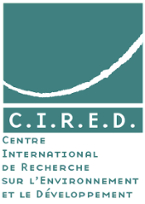 The International Research Centre for Environment and Development[Cired] is an interdisciplinary research group with a broad economic focus, created in 1973 at the École des hautes études en sciences sociales (EHESS) by Ignacy Sachs, on the basis of a nucleus gathered since 1971 under the name of Groupe de recherche sur la stratégie de développement. Based on a problem of the articulation of development challenges and environmental protection, in the wake of the debates generated by the United Nations Conference on Human Development in Stockholm (1972) and in response to the theses of the Club of Rome (Meadows et al., 1972), Cired is dedicated to the study of the relationships between modes of economic regulation and the genesis of the technological universes that structure the relationships between human activities and the natural and built biophysical environment. The aim is to understand how institutions, economic incentives and social conventions shape technical choices and consumption patterns, and then to study the economic and social feedback of their environmental impacts. These questions largely concern the short-term – long-term articulation. This is why the work carried out at Cired has always been underpinned by a prospective modelling effort and by a constant dialogue with the natural and engineering sciences. This multidisciplinary approach, reflected in the very composition of the team, has enabled it to meet the challenge of an integrated analysis of the challenges of sustainable development, taking into account the interdependencies between sectors of activity and between types of challenges (energy and food security, climate, technological risks, economic globalization, poverty reduction) This multidisciplinary approach explains the institutional backing of Cired. It became a research unit associated with the Centre national de la recherche scientifique[CNRS] in 1976, and integrated the systems of AgroParisTech (Institut des sciences et industries du vivant et de l’environnement) in 2000, the École nationale des ponts et chaussées (ENPC, now École des Ponts ParisTech) in 2004, and the Centre de coopération internationale en recherche agronomique pour le développement[CIRAD] in 2004. These institutions thus affirm their willingness to address the issues that the sustainable development issue raises for the sectors of activity for which they are responsible within an integrated framework and not by juxtaposing sectoral approaches.
The International Research Centre for Environment and Development[Cired] is an interdisciplinary research group with a broad economic focus, created in 1973 at the École des hautes études en sciences sociales (EHESS) by Ignacy Sachs, on the basis of a nucleus gathered since 1971 under the name of Groupe de recherche sur la stratégie de développement. Based on a problem of the articulation of development challenges and environmental protection, in the wake of the debates generated by the United Nations Conference on Human Development in Stockholm (1972) and in response to the theses of the Club of Rome (Meadows et al., 1972), Cired is dedicated to the study of the relationships between modes of economic regulation and the genesis of the technological universes that structure the relationships between human activities and the natural and built biophysical environment. The aim is to understand how institutions, economic incentives and social conventions shape technical choices and consumption patterns, and then to study the economic and social feedback of their environmental impacts. These questions largely concern the short-term – long-term articulation. This is why the work carried out at Cired has always been underpinned by a prospective modelling effort and by a constant dialogue with the natural and engineering sciences. This multidisciplinary approach, reflected in the very composition of the team, has enabled it to meet the challenge of an integrated analysis of the challenges of sustainable development, taking into account the interdependencies between sectors of activity and between types of challenges (energy and food security, climate, technological risks, economic globalization, poverty reduction) This multidisciplinary approach explains the institutional backing of Cired. It became a research unit associated with the Centre national de la recherche scientifique[CNRS] in 1976, and integrated the systems of AgroParisTech (Institut des sciences et industries du vivant et de l’environnement) in 2000, the École nationale des ponts et chaussées (ENPC, now École des Ponts ParisTech) in 2004, and the Centre de coopération internationale en recherche agronomique pour le développement[CIRAD] in 2004. These institutions thus affirm their willingness to address the issues that the sustainable development issue raises for the sectors of activity for which they are responsible within an integrated framework and not by juxtaposing sectoral approaches.
Centre Scientifique de Monaco (CSM)
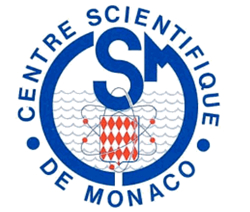 The Monaco Scientific Centre (CSM) is a public research institute created in 1960 at the initiative of Prince Rainier III. Dedicated to scientific research, the WSC is divided into three departments: a marine biology department specializing in the study of the functioning of tropical and Mediterranean marine ecosystems and the effects of climate change on these ecosystems; a polar biology department specializing in the study of penguins as indicators of changes in the polar ecosystem; and a medical biology department composed of three teams specialized in research against cancer and gene therapy, degenerative neuromuscular diseases and human microbiome. This department also includes a funding agency for clinical research in the Principality, a Human Health and Environment cluster approved as a WHO Collaborating Centre for Health and Sustainable Development and an International Sickle Cell Disease Observatory (MONACORD). The WSC is chaired by Prof. Patrick Rampal, former Dean of the Faculty of Medicine at the University of Nice.
The Monaco Scientific Centre (CSM) is a public research institute created in 1960 at the initiative of Prince Rainier III. Dedicated to scientific research, the WSC is divided into three departments: a marine biology department specializing in the study of the functioning of tropical and Mediterranean marine ecosystems and the effects of climate change on these ecosystems; a polar biology department specializing in the study of penguins as indicators of changes in the polar ecosystem; and a medical biology department composed of three teams specialized in research against cancer and gene therapy, degenerative neuromuscular diseases and human microbiome. This department also includes a funding agency for clinical research in the Principality, a Human Health and Environment cluster approved as a WHO Collaborating Centre for Health and Sustainable Development and an International Sickle Cell Disease Observatory (MONACORD). The WSC is chaired by Prof. Patrick Rampal, former Dean of the Faculty of Medicine at the University of Nice.
CHU Grenoble Alpes
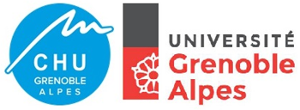 Since its creation on January 1, 2016, the Université Grenoble Alpes has been regularly ranked at the top 100 of several major international rankings. The UGA manages 45,000 students and 23 faculties, schools and institutes, including the Faculty of Medicine and Pharmacy. Grenoble Alpes University Hospital is a 2000-bed tertiary care hospital including all medical, surgical and obstetrical activities. The Bacteriology-Hospital Hygiene Laboratory is involved in the diagnosis, treatment and prevention of infectious diseases. He manages the National Reference Centre Francisella tularensis, agent of tularemia. Our research activities are carried out in the TIMC-IMAG laboratory (UMR CNRS/UGA 5525). They concern the development and evaluation of new diagnostic and therapeutic technologies for infectious diseases, and more particularly zoonoses.
Since its creation on January 1, 2016, the Université Grenoble Alpes has been regularly ranked at the top 100 of several major international rankings. The UGA manages 45,000 students and 23 faculties, schools and institutes, including the Faculty of Medicine and Pharmacy. Grenoble Alpes University Hospital is a 2000-bed tertiary care hospital including all medical, surgical and obstetrical activities. The Bacteriology-Hospital Hygiene Laboratory is involved in the diagnosis, treatment and prevention of infectious diseases. He manages the National Reference Centre Francisella tularensis, agent of tularemia. Our research activities are carried out in the TIMC-IMAG laboratory (UMR CNRS/UGA 5525). They concern the development and evaluation of new diagnostic and therapeutic technologies for infectious diseases, and more particularly zoonoses.
CNR – Compagnie Nationale du Rhône
 Created in 1933, the Compagnie Nationale du Rhône (CNR) received from the French State in 1934 the concession of the Rhône river for the development and exploitation of hydroelectric works according to 3 missions: electricity production, navigation , irrigation and other agricultural uses. CNR has built and operates 18 low- and medium-drop hydroelectric developments built from 1948 to 1986 between the Swiss border and the Mediterranean Sea. The facilities are made up of 19 hydroelectric power stations, 19 dams and 14 large-size locks. CNR is a general interest limited company with balanced public – private shareholders.
Created in 1933, the Compagnie Nationale du Rhône (CNR) received from the French State in 1934 the concession of the Rhône river for the development and exploitation of hydroelectric works according to 3 missions: electricity production, navigation , irrigation and other agricultural uses. CNR has built and operates 18 low- and medium-drop hydroelectric developments built from 1948 to 1986 between the Swiss border and the Mediterranean Sea. The facilities are made up of 19 hydroelectric power stations, 19 dams and 14 large-size locks. CNR is a general interest limited company with balanced public – private shareholders.
Conservatoire national des arts et métiers (CNAM)
 Cnam is a large organization that is part of higher education. Its main mission, since its creation in 1804, has been continuous professional training. The Paris centre has 64,000 auditors and is run by 348 teacher-researchers working in 21 research laboratories. Cnam is also present in the French Regions and in several foreign countries. The Chair of Geotechnics was created after the accident at the Malpasset dam (1959) and has had three successive officials: Georges Filliat, Claude Plumelle and Philippe Delmas. The team of teachers consists of two professors and two lecturers. Their teaching and research work focuses on geotechnical foundations and structures, soil and rock reinforcement, earthworks and roads, underground works, hydrogeology and environmental geotechnics.
Cnam is a large organization that is part of higher education. Its main mission, since its creation in 1804, has been continuous professional training. The Paris centre has 64,000 auditors and is run by 348 teacher-researchers working in 21 research laboratories. Cnam is also present in the French Regions and in several foreign countries. The Chair of Geotechnics was created after the accident at the Malpasset dam (1959) and has had three successive officials: Georges Filliat, Claude Plumelle and Philippe Delmas. The team of teachers consists of two professors and two lecturers. Their teaching and research work focuses on geotechnical foundations and structures, soil and rock reinforcement, earthworks and roads, underground works, hydrogeology and environmental geotechnics.
Département de Chimie Moléculaire (DCM) – Grenoble
 The Department of Molecular Chemistry (DCM) is a laboratory of the Université Grenoble Alpes and the CNRS (UMR CNRS-UGA 5250) located on the Saint-Martin-d’Hères – Gières campus. It brings together more than 150 people who work in two main areas: chemistry for health and chemistry for nanosciences. It is structured around major themes that include theoretical chemistry, inorganic chemistry, biomolecules (DNA, peptides) and organic synthesis. Benefiting from a very good technical platform (nuclear magnetic resonance, mass spectrometry, etc.), it is associated with actions focused on therapeutic, diagnostic and technological applications with university and industrial laboratories.
The Department of Molecular Chemistry (DCM) is a laboratory of the Université Grenoble Alpes and the CNRS (UMR CNRS-UGA 5250) located on the Saint-Martin-d’Hères – Gières campus. It brings together more than 150 people who work in two main areas: chemistry for health and chemistry for nanosciences. It is structured around major themes that include theoretical chemistry, inorganic chemistry, biomolecules (DNA, peptides) and organic synthesis. Benefiting from a very good technical platform (nuclear magnetic resonance, mass spectrometry, etc.), it is associated with actions focused on therapeutic, diagnostic and technological applications with university and industrial laboratories.
Département de zoologie / biologie évolutive de l’Université de Ratisbonne
 The department of zoology / evolutionary biology of the University of Regensburg (Germany) brings together around thirty researchers and technicians, including two permanent researchers and around fifteen doctoral and postdoctoral students. The team is conducting research with the objective of testing the predictions of evolutionary theory to better understand the evolution of new traits and lifestyles in several model organisms, particularly ants and aquatic arthropods. The research activities notably combine phylogeny and zoogeography approaches, the study of the structure and function of animal societies, the study of the reproduction and aging of social insects, of communication and decision-making as well as of rapid adaptations in ants.
The department of zoology / evolutionary biology of the University of Regensburg (Germany) brings together around thirty researchers and technicians, including two permanent researchers and around fifteen doctoral and postdoctoral students. The team is conducting research with the objective of testing the predictions of evolutionary theory to better understand the evolution of new traits and lifestyles in several model organisms, particularly ants and aquatic arthropods. The research activities notably combine phylogeny and zoogeography approaches, the study of the structure and function of animal societies, the study of the reproduction and aging of social insects, of communication and decision-making as well as of rapid adaptations in ants.
École et observatoire des sciences de la terre (EOST)
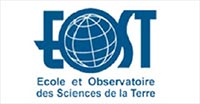 The School and Observatory of Earth Sciences (EOST) is responsible for teaching, research, observation and dissemination of knowledge in the earth sciences. It is under the supervision of the University of Strasbourg and the CNRS. EOST is located in two buildings on Strasbourg’s central university campus and has more than 160 permanent staff. As a component of the University of Strasbourg, EOST provides training in earth and environmental sciences for nearly 400 students (Engineering School, Licence and Master, Doctoral School). Research activity is carried out in two joint units of the CNRS and the University of Strasbourg: the Institut de Physique du Globe de Strasbourg (IPGS) and the Laboratoire d’Hydrologie et de Géochimie de Strasbourg (LHyGeS). It also includes a structure for coordinating research conducted at universities and companies on the use of high-temperature geothermal energy (Labex G-eau-thermie profonde).
The School and Observatory of Earth Sciences (EOST) is responsible for teaching, research, observation and dissemination of knowledge in the earth sciences. It is under the supervision of the University of Strasbourg and the CNRS. EOST is located in two buildings on Strasbourg’s central university campus and has more than 160 permanent staff. As a component of the University of Strasbourg, EOST provides training in earth and environmental sciences for nearly 400 students (Engineering School, Licence and Master, Doctoral School). Research activity is carried out in two joint units of the CNRS and the University of Strasbourg: the Institut de Physique du Globe de Strasbourg (IPGS) and the Laboratoire d’Hydrologie et de Géochimie de Strasbourg (LHyGeS). It also includes a structure for coordinating research conducted at universities and companies on the use of high-temperature geothermal energy (Labex G-eau-thermie profonde).
École Normale Supérieure de Lyon
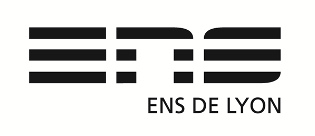 The ENS de Lyon trains motivated students in high-level teaching and research who have a desire to learn. Initially intended for the training of higher education teachers (associate professors in high schools and universities), it now adds to this initial mission the training of future researchers and teacher-researchers, by and for research, in scientific and literary disciplines.
The ENS de Lyon trains motivated students in high-level teaching and research who have a desire to learn. Initially intended for the training of higher education teachers (associate professors in high schools and universities), it now adds to this initial mission the training of future researchers and teacher-researchers, by and for research, in scientific and literary disciplines.
École Nationale Supérieure d’Ingénieurs de Poitiers
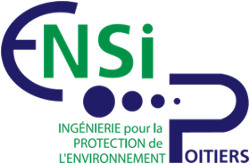 The École Nationale Supérieure d’Ingénieurs de Poitiers (ENSI Poitiers, created in 1984) of the University of Poitiers trains engineers specialized in engineering for environmental protection in three years. It awards two diplomas. An Energy degree with three backgrounds: Lighting, Acoustics and Air Conditioning, Industrial Energy and Electrical Energy Management. A degree in Water and Civil Engineering with three courses: Geotechnics and Building Materials, Geotechnics and Underground Works and Water and Nuisance Treatment.
The École Nationale Supérieure d’Ingénieurs de Poitiers (ENSI Poitiers, created in 1984) of the University of Poitiers trains engineers specialized in engineering for environmental protection in three years. It awards two diplomas. An Energy degree with three backgrounds: Lighting, Acoustics and Air Conditioning, Industrial Energy and Electrical Energy Management. A degree in Water and Civil Engineering with three courses: Geotechnics and Building Materials, Geotechnics and Underground Works and Water and Nuisance Treatment.
Encyclopédie de l’Énergie
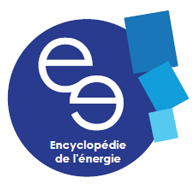 Located in the École Nationale Supérieure de l’Énergie, de l’Eau et de l’Environnement (ENSE3), the association (law 1901) Encyclopédie de l’Énergie aims to disseminate on the Web expert, personalized and structured knowledge on all aspects of energy. After 4 years of activity, at the end of June 2018, the Encyclopedia, which has put 180 articles online, plans to continue at an average monthly rate of 4 articles.
Located in the École Nationale Supérieure de l’Énergie, de l’Eau et de l’Environnement (ENSE3), the association (law 1901) Encyclopédie de l’Énergie aims to disseminate on the Web expert, personalized and structured knowledge on all aspects of energy. After 4 years of activity, at the end of June 2018, the Encyclopedia, which has put 180 articles online, plans to continue at an average monthly rate of 4 articles.
Engie
 ENGIE (formerly GDF SUEZ) – www.engie.com – is a leading global provider of low-carbon energy and services. With its 170,000 employees, customers, partners and stakeholders, ENGIE is committed every day to accelerating the transition to a carbon-neutral world through more energy-efficient and environmentally friendly solutions. From 2006 to 2013, the Electricity Generation France BU, which is part of the Group, was responsible for, among other things, the industrial and proactive development of the production and marketing of renewable electricity in France (hydroelectricity, onshore and offshore wind power, solar power, etc.).
ENGIE (formerly GDF SUEZ) – www.engie.com – is a leading global provider of low-carbon energy and services. With its 170,000 employees, customers, partners and stakeholders, ENGIE is committed every day to accelerating the transition to a carbon-neutral world through more energy-efficient and environmentally friendly solutions. From 2006 to 2013, the Electricity Generation France BU, which is part of the Group, was responsible for, among other things, the industrial and proactive development of the production and marketing of renewable electricity in France (hydroelectricity, onshore and offshore wind power, solar power, etc.).
Environnements et Paléoenvironnements Océaniques et Continentaux (EPOC)
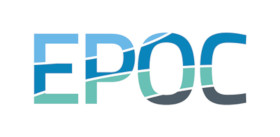 EPOC is a joint research unit whose area of interest is the study of Environments and Oceanic and Continental Paleoenvironments. His disciplinary spectrum is particularly broad, ranging from sediment analysis to aquatic ecotoxicology, environmental physics and chemistry, biogeochemistry and ecology. EPOC’s research and teaching activities are structured into three main themes: ecotoxicology, coastal oceanography and marine geosciences. It is in this last theme that paleoclimatology research is focused, namely the reconstruction of past climates and environments. Several regions are studied, from polar, Arctic or Antarctic areas, to tropical areas, including very regional studies on Aquitaine. The work carried out in paleoclimatology by the researchers and teacher-researchers of the EPOC laboratory is well known and recognized, both nationally and internationally.
EPOC is a joint research unit whose area of interest is the study of Environments and Oceanic and Continental Paleoenvironments. His disciplinary spectrum is particularly broad, ranging from sediment analysis to aquatic ecotoxicology, environmental physics and chemistry, biogeochemistry and ecology. EPOC’s research and teaching activities are structured into three main themes: ecotoxicology, coastal oceanography and marine geosciences. It is in this last theme that paleoclimatology research is focused, namely the reconstruction of past climates and environments. Several regions are studied, from polar, Arctic or Antarctic areas, to tropical areas, including very regional studies on Aquitaine. The work carried out in paleoclimatology by the researchers and teacher-researchers of the EPOC laboratory is well known and recognized, both nationally and internationally.
Équipe Systèmes Moléculaires Organisés et Développement Durable (SMODD)
 The SMODD team is a component of the IMRCP laboratory (Molecular Interactions and Chemical and Photochemical Reactivity), attached to the CNRS and the Paul Sabatier University in Toulouse. The originality of his research is based on the synthesis and engineering of Organized Molecular Systems (OMS). These systems are developed on the basis of new concepts of chemistry for sustainable development. The group’s main strength is to design and synthesize original SMOs that can be developed in three areas of application: vectorization (transport of drugs or other active ingredients to its target), reactivity in confined environments and development of biodegradable materials. The team’s specificity is to successfully develop projects that combine fundamental research and technological innovation. Some projects go all the way to the commercial product. Between February 2005 and February 2010, the team published 62 articles in these areas (in peer-reviewed journals), 18 invited lectures and 11 patents.
The SMODD team is a component of the IMRCP laboratory (Molecular Interactions and Chemical and Photochemical Reactivity), attached to the CNRS and the Paul Sabatier University in Toulouse. The originality of his research is based on the synthesis and engineering of Organized Molecular Systems (OMS). These systems are developed on the basis of new concepts of chemistry for sustainable development. The group’s main strength is to design and synthesize original SMOs that can be developed in three areas of application: vectorization (transport of drugs or other active ingredients to its target), reactivity in confined environments and development of biodegradable materials. The team’s specificity is to successfully develop projects that combine fundamental research and technological innovation. Some projects go all the way to the commercial product. Between February 2005 and February 2010, the team published 62 articles in these areas (in peer-reviewed journals), 18 invited lectures and 11 patents.
ESPCI Paris
![]() ESPCI Paris – PSL trains engineers of innovation able to invent the future and to answer the challenges of the world of tomorrow. With a rich history of 6 Nobel Prize and 570 teacher-researchers in 11 Units of research, ESPCI creates the innovation by encouraging the interdisciplinarity and the dialog between fundamental and applied sciences. The laboratory Mécanique des Milieux Hétérogènes (PMMH, UMR 7636) is a multidisciplinary experimental research unit in the fields of the mechanics of fluids and solids (engineering), physics, biology and chemistry). Its activity ranges from fundamental research to applications, with important relationships with the industrial world concerning mainly the innovation in processes. The OPUR organization explores and develop inexpensive and practical alternate water sources and gather both individuals and organizations interested in achieving these goals.
ESPCI Paris – PSL trains engineers of innovation able to invent the future and to answer the challenges of the world of tomorrow. With a rich history of 6 Nobel Prize and 570 teacher-researchers in 11 Units of research, ESPCI creates the innovation by encouraging the interdisciplinarity and the dialog between fundamental and applied sciences. The laboratory Mécanique des Milieux Hétérogènes (PMMH, UMR 7636) is a multidisciplinary experimental research unit in the fields of the mechanics of fluids and solids (engineering), physics, biology and chemistry). Its activity ranges from fundamental research to applications, with important relationships with the industrial world concerning mainly the innovation in processes. The OPUR organization explores and develop inexpensive and practical alternate water sources and gather both individuals and organizations interested in achieving these goals.
Evian-Volvic World
 Evian-Volvic World is the company that manages, protects, bottles and markets the four French natural mineral water sources and brands (Evian, Volvic, Badoit, La Salvetat) of the Danone Group’s Water Division. As part of EVW, the Water Institute by evian passes on the historical know-how of the Danone Group’s Water Division. It improves scientific knowledge on the management and protection of water resources, especially groundwater. As part of the Danone Group’s Water Division’s sustainable development strategy, it transfers its scientific and partnership expertise on water and ecosystems, water uses, particularly in the context of industrial production, and access to water. He shares his skills with professionals and students through four areas of activity: Teaching and training, Scientific and technical research, Conferences and workshops, Consulting.
Evian-Volvic World is the company that manages, protects, bottles and markets the four French natural mineral water sources and brands (Evian, Volvic, Badoit, La Salvetat) of the Danone Group’s Water Division. As part of EVW, the Water Institute by evian passes on the historical know-how of the Danone Group’s Water Division. It improves scientific knowledge on the management and protection of water resources, especially groundwater. As part of the Danone Group’s Water Division’s sustainable development strategy, it transfers its scientific and partnership expertise on water and ecosystems, water uses, particularly in the context of industrial production, and access to water. He shares his skills with professionals and students through four areas of activity: Teaching and training, Scientific and technical research, Conferences and workshops, Consulting.
Faculté de Pharmacie de Lille
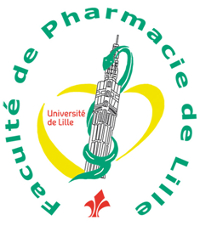 The Faculty of Pharmacy is the Training and Research Unit of the University of Lille which ensures the training of future pharmacists but also the continuous training of professional pharmacists. With 3,000 students and 230 staff, including 103 research professors in some 15 research teams, the Faculty is involved in today’s major health fields, including health-environment links. It participates in many programs for pharmacists: securing the city/hospital link, pharmacovigilance, therapeutic education, pharmaceutical interviews, etc.
The Faculty of Pharmacy is the Training and Research Unit of the University of Lille which ensures the training of future pharmacists but also the continuous training of professional pharmacists. With 3,000 students and 230 staff, including 103 research professors in some 15 research teams, the Faculty is involved in today’s major health fields, including health-environment links. It participates in many programs for pharmacists: securing the city/hospital link, pharmacovigilance, therapeutic education, pharmaceutical interviews, etc.
Faculté de Pharmacie de l’Université Grenoble Alpes (UGA)
 The Faculté de Pharmacie of the UGA (1,400 students) trains future pharmacists and health professionals in the service of the patient: listening to patients, relevance of advice, analysis of medical prescriptions, securing the delivery of medication. In addition, the Faculty prepares for the many professions of the pharmacist, including those practiced in a hospital environment: delivery in care establishments or in medical analysis laboratories. International Relations occupies an important part in the training (more than 90 international agreements initiated and implemented to date). Anchored in the UGA Research Laboratories, the Faculty is positioning itself as a place of training and research geared towards educational innovation and the search for excellence; it is also the pilot of the Masters in “Health Engineering”, a meeting place for young scientists, doctors, pharmacists, engineers, veterinarians or midwives, it now welcomes more than 400 students.
The Faculté de Pharmacie of the UGA (1,400 students) trains future pharmacists and health professionals in the service of the patient: listening to patients, relevance of advice, analysis of medical prescriptions, securing the delivery of medication. In addition, the Faculty prepares for the many professions of the pharmacist, including those practiced in a hospital environment: delivery in care establishments or in medical analysis laboratories. International Relations occupies an important part in the training (more than 90 international agreements initiated and implemented to date). Anchored in the UGA Research Laboratories, the Faculty is positioning itself as a place of training and research geared towards educational innovation and the search for excellence; it is also the pilot of the Masters in “Health Engineering”, a meeting place for young scientists, doctors, pharmacists, engineers, veterinarians or midwives, it now welcomes more than 400 students.
Groupement de Recherche Eau Sol Environnement
 The PEIRENE EA 7500 Laboratory at the University of Limoges is a young public research entity (EA) that has been in existence since 2018. It is the result of the “fusion” of GRESE (Groupement de Recherche Eau Sol Environnement), LCSN (Laboratoire de Chimie des Substances Naturelles) and UGMA (Unité de Génétique Moléculaire Animale). The research focuses on “natural resources”. The laboratory is organized in 3 axes, of which the former GRESE is a research axis. The work on the critical area is particularly interested in the quality of the environment and is supported by a multidisciplinary multidisciplinary group of leading experts in the field of the environment, as well as in chemistry, biology, microbiology, soil sciences, geology and process engineering. The 40 permanent employees provide answers to environmental problems for economic and social actors in the field of diagnosis and process.
The PEIRENE EA 7500 Laboratory at the University of Limoges is a young public research entity (EA) that has been in existence since 2018. It is the result of the “fusion” of GRESE (Groupement de Recherche Eau Sol Environnement), LCSN (Laboratoire de Chimie des Substances Naturelles) and UGMA (Unité de Génétique Moléculaire Animale). The research focuses on “natural resources”. The laboratory is organized in 3 axes, of which the former GRESE is a research axis. The work on the critical area is particularly interested in the quality of the environment and is supported by a multidisciplinary multidisciplinary group of leading experts in the field of the environment, as well as in chemistry, biology, microbiology, soil sciences, geology and process engineering. The 40 permanent employees provide answers to environmental problems for economic and social actors in the field of diagnosis and process.
Imperial College – Life Sciences Department – London
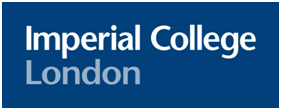 The Life Sciences Department of Imperial College London is one of the largest European groups in this field. It has about a hundred professors, 180 researchers and post-doctoral fellows, 200 doctoral students. The research carried out concerns all levels of life organization and ranges from atoms to the biosphere.
The Life Sciences Department of Imperial College London is one of the largest European groups in this field. It has about a hundred professors, 180 researchers and post-doctoral fellows, 200 doctoral students. The research carried out concerns all levels of life organization and ranges from atoms to the biosphere.
Institut de Biologique de l’École Normale Supérieure (IBENS)
Founded in 2010 by Antoine Triller, the Institut de Biologie de l’Ecole Normale Supérieure (IBENS) – a joint unit of ENS, CNRS and INSERM – is a fundamental research center that carries out innovative projects aimed at decipher the essential mechanisms and principles at the heart of the normal and pathological functioning of living systems.Recognized internationally for the quality and originality of its work, the IBENS welcomes more than 300 people grouped into 30 independent teams leading highly collaborative research that combines experimental and theoretical approaches and endowed with a strong translational potential Scientific activity covers four major disciplinary fields (Genetics and Genomics, Cellular Biology and Development, Neuroscience, Ecology and Evolution) and is based on five technological platforms (Genomics, Proteomics , Imaging, Computational Biology, FabLab) and centralized support functions (Administration, IT). With a strong vocation to multidisciplinarity, IBENS carries a holistic vision of living things by integrating their different levels of complexity – from single molecules and cells, to networks and organs, to whole organisms and populations in interaction with their environment. The research carried out at IBENS benefits from an exceptional intellectual and scientific environment provided by the other departments of the ENS (Physics, Chemistry, Cognitive Studies, Mathematics & Applications) but also by the many neighboring institutes and research centers grouped together at within the PSL University (Institut Curie, Collège de France, ESPCI, etc …) Beyond the research itself, the IBENS is also a place of technological innovation (filing of patents, hosting of start-ups), and the transmission of knowledge to the younger generations. Thus our institute, within the Department of Biology of the ENS, is strongly involved in the education and training of students and young researchers at all levels. Through research training through research, IBENS aims to prepare and inspire tomorrow’s researchers in the life sciences.
Institut de Biologie Intégrative de la Cellule (I2BC) – Paris Sud
 The Institute of Integrative Cell Biology (I2BC) is a Joint Research Unit (CEA, CNRS, University of Paris Sud). The unit is made up of nearly 80 research teams, 15 technology platforms, from 8 research units (CGM, IBBMC, IGM, ISV, LEGS, VMS, SB2SM, SBiGeM). The institute is spread over 3 research sites (Orsay Campus of the University of Paris Sud, CNRS Campus of Gif sur Yvette and CEA Saclay Campus) in 14 buildings until the gathering scheduled for 2018 on the CNRS campus in Gif.
The Institute of Integrative Cell Biology (I2BC) is a Joint Research Unit (CEA, CNRS, University of Paris Sud). The unit is made up of nearly 80 research teams, 15 technology platforms, from 8 research units (CGM, IBBMC, IGM, ISV, LEGS, VMS, SB2SM, SBiGeM). The institute is spread over 3 research sites (Orsay Campus of the University of Paris Sud, CNRS Campus of Gif sur Yvette and CEA Saclay Campus) in 14 buildings until the gathering scheduled for 2018 on the CNRS campus in Gif.
Institut de Biologie Paris-Seine
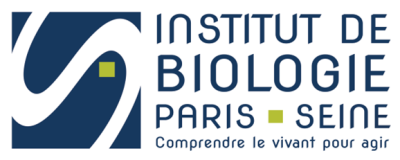 The Paris-Seine Institute of Biology (IBPS – FR3631), created on January 1, 2014, concentrates all of the research in biology on the Pierre and Marie Curie campus, within Sorbonne University (SU), where this discipline has always occupied a central place. Located in the Quai St-Bernard building on the banks of the Seine, the IBPS brings together more than 500 people divided into 5 units [UMR 7238: Computational and Quantitative Biology (CQB), UMR 8256: INSERM ERL U1164: Biological adaptation and aging ; UMR 8246: INSERM U1130: Neuroscience; UMR 7622: Developmental biology; UMR 8237: Jean Perrin Laboratory] and 7 technological platforms. The IBPS wishes both to respond to the major current challenges of society in the field of the environment, aging, neurodegenerative diseases and behavioral diseases, and to advance our knowledge on a fundamental level. A central part of the IBPS strategy is based on the development of new quantitative methodologies at the frontier of biology and computer science, biology and mathematics, or biology and physics.
The Paris-Seine Institute of Biology (IBPS – FR3631), created on January 1, 2014, concentrates all of the research in biology on the Pierre and Marie Curie campus, within Sorbonne University (SU), where this discipline has always occupied a central place. Located in the Quai St-Bernard building on the banks of the Seine, the IBPS brings together more than 500 people divided into 5 units [UMR 7238: Computational and Quantitative Biology (CQB), UMR 8256: INSERM ERL U1164: Biological adaptation and aging ; UMR 8246: INSERM U1130: Neuroscience; UMR 7622: Developmental biology; UMR 8237: Jean Perrin Laboratory] and 7 technological platforms. The IBPS wishes both to respond to the major current challenges of society in the field of the environment, aging, neurodegenerative diseases and behavioral diseases, and to advance our knowledge on a fundamental level. A central part of the IBPS strategy is based on the development of new quantitative methodologies at the frontier of biology and computer science, biology and mathematics, or biology and physics.
Institut de Biologie Structurale (IBS) – Grenoble
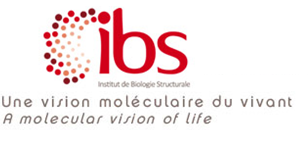 The Institut de Biologie Structurale à Grenoble is a Joint Research Unit (UMR 5075) created by the CEA, the CNRS and the Université Grenoble Alpes, located in Grenoble on the campus of the peninsula. It offers multidisciplinary approaches, at the frontiers of biology, physics and chemistry, combining fundamental research (structural and functional study of biological macromolecules – e. g. proteins), applied research and technical innovation. Its mission is to determine the function and mode of action of proteins of particular interest for understanding the fundamental mechanisms of living organisms or for medical and biotechnological applications. To this end, IBS is developing new approaches in structural biology based on a complete set of technological platforms as well as on the major Grenoble instruments: the ESRF synchrotron and the Laue-Langevin Institute (ILL). Its themes are developed in eighteen groups, bringing together about 270 people. IBS scientists actively participate in the training of students, master’s and doctoral students, and more than 20 professors and assistant professors teach at UGA.
The Institut de Biologie Structurale à Grenoble is a Joint Research Unit (UMR 5075) created by the CEA, the CNRS and the Université Grenoble Alpes, located in Grenoble on the campus of the peninsula. It offers multidisciplinary approaches, at the frontiers of biology, physics and chemistry, combining fundamental research (structural and functional study of biological macromolecules – e. g. proteins), applied research and technical innovation. Its mission is to determine the function and mode of action of proteins of particular interest for understanding the fundamental mechanisms of living organisms or for medical and biotechnological applications. To this end, IBS is developing new approaches in structural biology based on a complete set of technological platforms as well as on the major Grenoble instruments: the ESRF synchrotron and the Laue-Langevin Institute (ILL). Its themes are developed in eighteen groups, bringing together about 270 people. IBS scientists actively participate in the training of students, master’s and doctoral students, and more than 20 professors and assistant professors teach at UGA.
Institut de Chimie des Milieux et Matériaux de Poitiers
 IC2MP is an interdisciplinary research institute created in 2012 in the field of chemistry and surface geosciences. It has a staff of 250 people on 13,000 m2 on the University’s Science campus. It depends on CNRS sections 14 (main section), and 13, 16, and 20 (secondary sections). The institute brings together 5 teams and 3 platforms resulting from the merger of all or part of four chemistry and geosciences laboratories that have been recognized by the CNRS for some 40 years; these four laboratories are: the Organic Chemistry Catalysis Laboratory (LACCO or UMR6503); the Natural Substances Synthesis and Reactivity Laboratory (SRSN or UMR6514); the Water Chemistry and Microbiology Laboratory (LCME or UMR6008); the Hydrogeology, Clays, Soils and Alterations Laboratory (HydrASA or UMR6269). The fields of application of this research concern energy, materials and natural resources in the context of a sustainable environment.
IC2MP is an interdisciplinary research institute created in 2012 in the field of chemistry and surface geosciences. It has a staff of 250 people on 13,000 m2 on the University’s Science campus. It depends on CNRS sections 14 (main section), and 13, 16, and 20 (secondary sections). The institute brings together 5 teams and 3 platforms resulting from the merger of all or part of four chemistry and geosciences laboratories that have been recognized by the CNRS for some 40 years; these four laboratories are: the Organic Chemistry Catalysis Laboratory (LACCO or UMR6503); the Natural Substances Synthesis and Reactivity Laboratory (SRSN or UMR6514); the Water Chemistry and Microbiology Laboratory (LCME or UMR6008); the Hydrogeology, Clays, Soils and Alterations Laboratory (HydrASA or UMR6269). The fields of application of this research concern energy, materials and natural resources in the context of a sustainable environment.
Institut de Droit de l’Environnement (IDE)
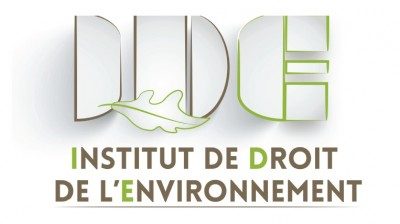 The Institut de Droit de l’Environnement is a component of the Laboratoire Environnement Ville Société (EVS – UMR 5600) of the Université Jean Moulin Lyon 3. Created in 1979, it now has six statutory professor-researchers, about ten doctoral students and several associate researchers. Its research activities cover all fields of the environment, approached from a legal perspective: climate, biodiversity, waste, water, risks, urbanization, energy… The objective of the researchers is to show that law is a tool that makes it possible to respond to environmental challenges, which naturally leads them to work by calling on scientific plurality: ecologists, philosophers, geographers, economists, engineers… It is in this spirit that they contribute their knowledge to the Encyclopedia of the Environment.
The Institut de Droit de l’Environnement is a component of the Laboratoire Environnement Ville Société (EVS – UMR 5600) of the Université Jean Moulin Lyon 3. Created in 1979, it now has six statutory professor-researchers, about ten doctoral students and several associate researchers. Its research activities cover all fields of the environment, approached from a legal perspective: climate, biodiversity, waste, water, risks, urbanization, energy… The objective of the researchers is to show that law is a tool that makes it possible to respond to environmental challenges, which naturally leads them to work by calling on scientific plurality: ecologists, philosophers, geographers, economists, engineers… It is in this spirit that they contribute their knowledge to the Encyclopedia of the Environment.
Institut de Géographie Alpine (IGA)
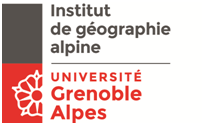 The Institut de Géographie Alpine, founded in 1911, is one of the oldest geography institutes in France. It is traditionally oriented towards the geography of mountains, particularly the French Alps. This theme remains very present, even if the themes and issues have diversified considerably. The IGA and its laboratories have also more recently been one of the poles of development of the notion of territory. The IGA is widely involved in finalised research on territorial development and environmental geography. Finally, the IGA provides bachelor’s and master’s degree courses in general geography, environmental geography and territorial development.
The Institut de Géographie Alpine, founded in 1911, is one of the oldest geography institutes in France. It is traditionally oriented towards the geography of mountains, particularly the French Alps. This theme remains very present, even if the themes and issues have diversified considerably. The IGA and its laboratories have also more recently been one of the poles of development of the notion of territory. The IGA is widely involved in finalised research on territorial development and environmental geography. Finally, the IGA provides bachelor’s and master’s degree courses in general geography, environmental geography and territorial development.
Institut de Physique du globe de Paris
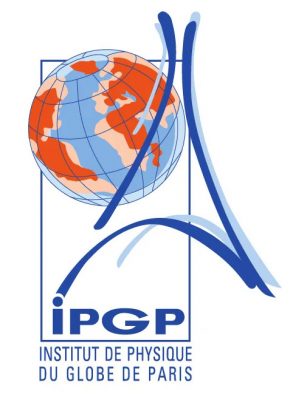
The Institut de Physique du globe de Paris is a major institution of higher education and research. It is a component establishment of the University of Paris, supervising the Joint Research Unit no. 7154 of the National Center for Scientific Research (CNRS) and space laboratory of the National Center for Space Studies (CNES). The missions of the IPGP are research and teaching in all fields of study of the Earth and solid planets (geophysics, geochemistry, quantitative geology). The institute is responsible for monitoring the three active French volcanoes (La Soufrière de Guadeloupe – La montagne Pelée in Martinique and Le Piton de la Fournaise in Réunion), the global network of Géoscope seismological stations, and is a major component of the network world of Intermagnet magnetic observatories.
Institut de Systématique, Evolution et Biodiversité
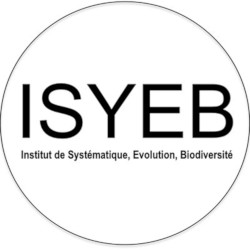 The academic excellence of the Faculty of Sciences and Engineering of Sorbonne University is driven by its lecturer-researchers and researchers whose research work contributes to the quality of the training provided on the various campuses of the faculty, in Paris and in the marine stations of Banyuls, Roscoff and Villefranche-sur-Mer. In 2020, the Faculty had 72 research laboratories, 3,200 staff and 22,000 students. The Institute of Systematics, Evolution and Biodiversity laboratory (ISYEB, UMR 7205) is a joint research unit working under the supervision of the National Museum of Natural History (MNHN), Sorbonne University (SU), CNRS (Institute for Ecology and Environment , INEE), the Ecole Pratique des Hautes Études (EPHE) and the University of the Antilles. The aim of the ISYEB is to study the origin of biodiversity, the diversification of species and the establishment of communities in relation to the evolution of taxa in time and space. The unit is one of the European poles of systematics and contributes significantly to the fields of taxonomy and evolutionary biology. Integrative approaches are developed there, which have made it possible to implement taxonomic, molecular (genomic and meta-genomic), acoustic, cytogenetic, morphological and morphometric tools.
The academic excellence of the Faculty of Sciences and Engineering of Sorbonne University is driven by its lecturer-researchers and researchers whose research work contributes to the quality of the training provided on the various campuses of the faculty, in Paris and in the marine stations of Banyuls, Roscoff and Villefranche-sur-Mer. In 2020, the Faculty had 72 research laboratories, 3,200 staff and 22,000 students. The Institute of Systematics, Evolution and Biodiversity laboratory (ISYEB, UMR 7205) is a joint research unit working under the supervision of the National Museum of Natural History (MNHN), Sorbonne University (SU), CNRS (Institute for Ecology and Environment , INEE), the Ecole Pratique des Hautes Études (EPHE) and the University of the Antilles. The aim of the ISYEB is to study the origin of biodiversity, the diversification of species and the establishment of communities in relation to the evolution of taxa in time and space. The unit is one of the European poles of systematics and contributes significantly to the fields of taxonomy and evolutionary biology. Integrative approaches are developed there, which have made it possible to implement taxonomic, molecular (genomic and meta-genomic), acoustic, cytogenetic, morphological and morphometric tools.
.
Institut des géosciences de l’environnement (IGE)
 The Institute of Environmental Geosciences (IGE, UMR 5001) is a public research laboratory created in 2017 as a result of the merger of the Laboratory of Environmental Glaciology and Geophysics (LGGE) and the Laboratory for the Study of Transfers in Hydrology and Environment (LTHE). IGE conducts research on climate, the water cycle, the cryosphere and natural and anthropized environments. This research aims to better understand the processes that govern the functioning of different geophysical environments (ocean, physico-chemical atmosphere, cryosphere, watersheds, critical area), their interactions and responses to anthropogenic pressures, as well as the adaptation and resilience processes of societies. The major areas of research are alpine areas, polar areas, the global ocean and intertropical areas. The IGE is based on a strategy combining observation (field observations, national observation services, space missions), instrumental development and modelling.
The Institute of Environmental Geosciences (IGE, UMR 5001) is a public research laboratory created in 2017 as a result of the merger of the Laboratory of Environmental Glaciology and Geophysics (LGGE) and the Laboratory for the Study of Transfers in Hydrology and Environment (LTHE). IGE conducts research on climate, the water cycle, the cryosphere and natural and anthropized environments. This research aims to better understand the processes that govern the functioning of different geophysical environments (ocean, physico-chemical atmosphere, cryosphere, watersheds, critical area), their interactions and responses to anthropogenic pressures, as well as the adaptation and resilience processes of societies. The major areas of research are alpine areas, polar areas, the global ocean and intertropical areas. The IGE is based on a strategy combining observation (field observations, national observation services, space missions), instrumental development and modelling.
Institut Laue-Langevin (ILL) – Grenoble
 The Laue-Langevin Institute, named after physicists Max von Laue and Paul Langevin, is an international research organization based in Grenoble. His research focuses on the production of neutrons and their use in the study of the structure of matter and its properties at the microscopic scale. Neutron scattering is above all an ideal method for observing the movements of atoms and molecules. In particular, it makes it possible to analyse the movements of organic molecules, and consequently to understand the functioning of living organisms. The neutrons produced in Grenoble come from a nuclear reactor similar to those that produce our electricity. At the ILL, neutrons are collected and the energy produced is eliminated. In nuclear power plants, the opposite is true.
The Laue-Langevin Institute, named after physicists Max von Laue and Paul Langevin, is an international research organization based in Grenoble. His research focuses on the production of neutrons and their use in the study of the structure of matter and its properties at the microscopic scale. Neutron scattering is above all an ideal method for observing the movements of atoms and molecules. In particular, it makes it possible to analyse the movements of organic molecules, and consequently to understand the functioning of living organisms. The neutrons produced in Grenoble come from a nuclear reactor similar to those that produce our electricity. At the ILL, neutrons are collected and the energy produced is eliminated. In nuclear power plants, the opposite is true.
Institut Méditerranéen de la Biodiversité et d’Ecologie marine et continentale (IMBE)
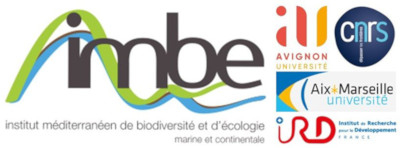 The Mediterranean Institute of Biodiversity and Marine and Continental Ecology (IMBE) is a Joint Research Unit. The Unit is attached to 4 departments, Aix-Marseille University (AMU), CNRS-UMR7263, IRD-UMR237 and Avignon University (AU). In January 2018, the Mediterranean Institute of Biodiversity and Marine and Continental Ecology brought together 175 permanent staff (including 93 teacher-researchers, 27 researchers and 55 technicians, engineers and administrative staff), 58 doctoral students and around thirty contract staff. The unit is located in France on 6 main sites in Marseille, Aix en Provence and Avignon, as well as on the O3HP site. With more than 280 environmental research professionals, the IMBE brings strong expertise in the key areas of biodiversity, evolution, ecology, paleoecology, health and environment relations and human relations. environment (global ecology).
The Mediterranean Institute of Biodiversity and Marine and Continental Ecology (IMBE) is a Joint Research Unit. The Unit is attached to 4 departments, Aix-Marseille University (AMU), CNRS-UMR7263, IRD-UMR237 and Avignon University (AU). In January 2018, the Mediterranean Institute of Biodiversity and Marine and Continental Ecology brought together 175 permanent staff (including 93 teacher-researchers, 27 researchers and 55 technicians, engineers and administrative staff), 58 doctoral students and around thirty contract staff. The unit is located in France on 6 main sites in Marseille, Aix en Provence and Avignon, as well as on the O3HP site. With more than 280 environmental research professionals, the IMBE brings strong expertise in the key areas of biodiversity, evolution, ecology, paleoecology, health and environment relations and human relations. environment (global ecology).
Institut Micalis
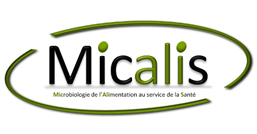 The Institut Micalis is a joint research unit associating INRA and AgroParisTech, which is located on the campus of the University of Paris-Saclay. Micalis’ objective is to study the “Microbiology of Food for Health”. The expertise and research projects of the 350 agents of the Micalis Institute are structured around 3 thematic axes: 1, the physiology of microorganisms through systems biology, 2, the emergence mechanisms of opportunistic foodborne pathogenic microorganisms and 3, the complex microbial ecosystems of food and humans as determinants of food quality and health.
The Institut Micalis is a joint research unit associating INRA and AgroParisTech, which is located on the campus of the University of Paris-Saclay. Micalis’ objective is to study the “Microbiology of Food for Health”. The expertise and research projects of the 350 agents of the Micalis Institute are structured around 3 thematic axes: 1, the physiology of microorganisms through systems biology, 2, the emergence mechanisms of opportunistic foodborne pathogenic microorganisms and 3, the complex microbial ecosystems of food and humans as determinants of food quality and health.
Dr. Thomas’ work fits into this last thematic area since its objective is to better understand the dialogue between microorganisms and human cells.
Institut Nanoscience et Cryogénie (INAC) – Grenoble
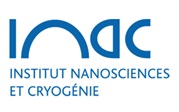 The Nanoscience and Cryogenics Institute (INAC) is an institute of the CEA, a federative research structure of CEA-Université Grenoble Alpes. It is composed of 5 laboratories associated with the UGA and some with the CNRS. Among them, the SyMMES laboratory (Molecular SYSTEMS and nanoMaterials for Energy and Health) aims to develop fundamental research on topics of high societal importance: carbon-free energy, information and communication technologies, biotechnology and human health. To do this, the SyMMES explores the design, synthesis and study of innovative and original architectures and functional materials. He is also interested in the reactivity and properties of biomolecules, thus bringing an original approach to biological questions.
The Nanoscience and Cryogenics Institute (INAC) is an institute of the CEA, a federative research structure of CEA-Université Grenoble Alpes. It is composed of 5 laboratories associated with the UGA and some with the CNRS. Among them, the SyMMES laboratory (Molecular SYSTEMS and nanoMaterials for Energy and Health) aims to develop fundamental research on topics of high societal importance: carbon-free energy, information and communication technologies, biotechnology and human health. To do this, the SyMMES explores the design, synthesis and study of innovative and original architectures and functional materials. He is also interested in the reactivity and properties of biomolecules, thus bringing an original approach to biological questions.
Institut national de Recherche en Sciences et Technologies pour l’Environnement et l’Agriculture (IRSTEA)
 Irstea is developing a finalised research model in environmental sciences aimed at producing concrete solutions for public decision-making and leading to action. The research has a strong technological and methodological component, based on an approach of co-construction of scientific questions with many socio-economic actors. The research focuses mainly on water, territories and environmental technologies. More specifically, the Irstea centre in Grenoble conducts research on natural risks in the mountains, on ecosystems and socio-ecosystems and on environmental and climatic issues for peri-urban and mountain territories.
Irstea is developing a finalised research model in environmental sciences aimed at producing concrete solutions for public decision-making and leading to action. The research has a strong technological and methodological component, based on an approach of co-construction of scientific questions with many socio-economic actors. The research focuses mainly on water, territories and environmental technologies. More specifically, the Irstea centre in Grenoble conducts research on natural risks in the mountains, on ecosystems and socio-ecosystems and on environmental and climatic issues for peri-urban and mountain territories.
Institut de Recherche Biomédicale des Armées (IRBA)
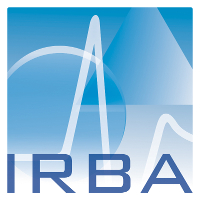 The Army Biomedical Research Institute (IRBA) is the establishment of the Army Health Service (SSA) specifically dedicated to research. Located in Ile-de-France, in Brétigny-sur-Orge (Essonne), it conducts medical research focused on the employment environments of the armed forces and on CBRN risks (nuclear, radiological, biological and chemical). The Institute provides research activities, expertise and training. The Institute, created on 1 March 2009, brought together the four research establishments of the Armed Forces Health Service with a view to concentrating research resources dedicated to improving the health of the military. It depends on the DGA (Direction Générale de l’Armement).
The Army Biomedical Research Institute (IRBA) is the establishment of the Army Health Service (SSA) specifically dedicated to research. Located in Ile-de-France, in Brétigny-sur-Orge (Essonne), it conducts medical research focused on the employment environments of the armed forces and on CBRN risks (nuclear, radiological, biological and chemical). The Institute provides research activities, expertise and training. The Institute, created on 1 March 2009, brought together the four research establishments of the Armed Forces Health Service with a view to concentrating research resources dedicated to improving the health of the military. It depends on the DGA (Direction Générale de l’Armement).
Institut de Recherche pour le Développement (IRD) – UMMISCO
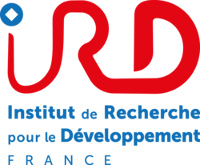 The Research Institute for Development is a French public establishment placed under the dual supervision of the Ministries of Higher Education and Research and of Foreign Affairs and International Development. Through its network and its presence in some fifty countries, it carries an original approach to research, expertise, training and knowledge sharing for the benefit of territories and countries that make science and innovation one of the first levers of their development. UMMISCO is an International Joint Unit for Mathematical and Computer Modeling of Complex Systems. This unit is made up of 63 permanent researchers or teacher-researchers who conduct research in computer science and mathematics applied to real issues affecting epidemiology, ecology and society. UMMISCO is under the supervision of IRD and Sorbonne Universities. Its partners are the Cady Ayyad University of Marrakech in Morocco, the Cheikh Anta Diop University in Dakar and the Gaston Berger University in Saint-Louis in Senegal, the University of Yaoundé 1 in Cameroon, as well as the University of Sciences and techniques from Hanoi in Vietnam.
The Research Institute for Development is a French public establishment placed under the dual supervision of the Ministries of Higher Education and Research and of Foreign Affairs and International Development. Through its network and its presence in some fifty countries, it carries an original approach to research, expertise, training and knowledge sharing for the benefit of territories and countries that make science and innovation one of the first levers of their development. UMMISCO is an International Joint Unit for Mathematical and Computer Modeling of Complex Systems. This unit is made up of 63 permanent researchers or teacher-researchers who conduct research in computer science and mathematics applied to real issues affecting epidemiology, ecology and society. UMMISCO is under the supervision of IRD and Sorbonne Universities. Its partners are the Cady Ayyad University of Marrakech in Morocco, the Cheikh Anta Diop University in Dakar and the Gaston Berger University in Saint-Louis in Senegal, the University of Yaoundé 1 in Cameroon, as well as the University of Sciences and techniques from Hanoi in Vietnam.
Institut de Recherche pour le Développement (IRD) – UMR DIADE
 The Research Institute for Development (IRD) is a French public institution placed under the dual supervision of the Ministries of Higher Education, Research and Innovation and Europe and Foreign Affairs. It carries out research, expertise and training activities in partnership aimed at contributing to the sustainable and equitable development of developing countries, mainly in the intertropical regions and the Mediterranean area. The UMR DIADE (Diversity Adaptation and Development of plants; IRD, University of Montpellier, CIRAD) studies plant biodiversity, the mechanisms of adaptation of plants and their interactions with the environment, and explores the development of plants to better understand the expression of the characters and their functioning. The study of agrobiodiversity makes it possible to characterize the exceptional plant diversity of the countries of the South with the aim of its preservation but also its enhancement by local societies and economic systems. Research on the adaptation mechanisms of plants and their interactions with the environment contributes to food security objectives to produce more and “better” in a context of global changes. The final objective is to achieve better sustainability of plant production, and to meet the expectations of the agroecological transition.
The Research Institute for Development (IRD) is a French public institution placed under the dual supervision of the Ministries of Higher Education, Research and Innovation and Europe and Foreign Affairs. It carries out research, expertise and training activities in partnership aimed at contributing to the sustainable and equitable development of developing countries, mainly in the intertropical regions and the Mediterranean area. The UMR DIADE (Diversity Adaptation and Development of plants; IRD, University of Montpellier, CIRAD) studies plant biodiversity, the mechanisms of adaptation of plants and their interactions with the environment, and explores the development of plants to better understand the expression of the characters and their functioning. The study of agrobiodiversity makes it possible to characterize the exceptional plant diversity of the countries of the South with the aim of its preservation but also its enhancement by local societies and economic systems. Research on the adaptation mechanisms of plants and their interactions with the environment contributes to food security objectives to produce more and “better” in a context of global changes. The final objective is to achieve better sustainability of plant production, and to meet the expectations of the agroecological transition.
Institut National des Sciences et Techniques Nucléaires (INSTN)
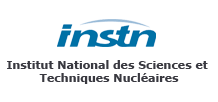 INSTN is a public institution of higher education, administered by the CEA (Commissariat à l’Énergie atomique et aux énergies Alternatives), and placed under the joint supervision of the ministries in charge of Higher Education, Industry, Economy and Environment. INSTN was created in 1956 and has been supporting the growth of nuclear energy for 60 years by contributing to the development of the human resources needed for research and industry at all levels of qualification, from operator to researcher.
INSTN is a public institution of higher education, administered by the CEA (Commissariat à l’Énergie atomique et aux énergies Alternatives), and placed under the joint supervision of the ministries in charge of Higher Education, Industry, Economy and Environment. INSTN was created in 1956 and has been supporting the growth of nuclear energy for 60 years by contributing to the development of the human resources needed for research and industry at all levels of qualification, from operator to researcher.
Institut photonique d’analyse non-destructive européen des matériaux anciens (IPANEMA)
 IPANEMA is a service and research unit (CNRS, Ministry of Culture and Communication and University of Versailles Saint-Quentin-en-Yvelines) located on the site of the SOLEIL synchrotron on the Saclay plateau. It is a laboratory for the development of advanced methods for the characterization of materials from archaeology, palaeo-environments, palaeontology and cultural heritage, and for supporting synchrotron research with external users hosted on the platform. To this end, IPANEMA develops and makes available a set of techniques to prepare samples, study artifacts and samples, and statistically analyze the data sets collected, using the platforms and major instruments of the University of Paris-Saclay.
IPANEMA is a service and research unit (CNRS, Ministry of Culture and Communication and University of Versailles Saint-Quentin-en-Yvelines) located on the site of the SOLEIL synchrotron on the Saclay plateau. It is a laboratory for the development of advanced methods for the characterization of materials from archaeology, palaeo-environments, palaeontology and cultural heritage, and for supporting synchrotron research with external users hosted on the platform. To this end, IPANEMA develops and makes available a set of techniques to prepare samples, study artifacts and samples, and statistically analyze the data sets collected, using the platforms and major instruments of the University of Paris-Saclay.
Institut de Planétologie et d’Astrophysique de Grenoble (IPAG)
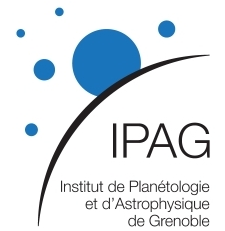 IPAG works on stellar and planetary formation, from the initial phases of cloud collapse to the physics and chemistry of circumstellar disks and the formation of planets, as well as star-disk interaction via the stellar magnetosphere. IPAG is also working on plasmas and physical processes involved in accretion-ejection phenomena around young stellar objects and compact objects, where the energies involved are enormous, with relativistic effects. In planetary sciences, IPAG studies solar-terrestrial interactions and space meteorology, planetary sub-surfaces, small bodies of the solar system, and the chemical evolution of primitive matter. To support this thematic research, IPAG is involved in the construction and development of many instruments that equip the most powerful international telescopes in the world. IPAG also develops and operates instruments on space probes to study the internal structure of the bodies of the solar system, the groundwater of Mars, and their atmospheric composition.
IPAG works on stellar and planetary formation, from the initial phases of cloud collapse to the physics and chemistry of circumstellar disks and the formation of planets, as well as star-disk interaction via the stellar magnetosphere. IPAG is also working on plasmas and physical processes involved in accretion-ejection phenomena around young stellar objects and compact objects, where the energies involved are enormous, with relativistic effects. In planetary sciences, IPAG studies solar-terrestrial interactions and space meteorology, planetary sub-surfaces, small bodies of the solar system, and the chemical evolution of primitive matter. To support this thematic research, IPAG is involved in the construction and development of many instruments that equip the most powerful international telescopes in the world. IPAG also develops and operates instruments on space probes to study the internal structure of the bodies of the solar system, the groundwater of Mars, and their atmospheric composition.
Institut polaire français Paul-Émile-Victor
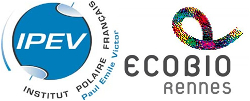 The IPEV is the projection agency for resources in the polar regions for the benefit of French academic research. It is in the form of a GIP, located in Brest and composed of 9 members including the Ministry of Research, the Ministry of Foreign Affairs and the CNRS. One of the Institute’s objectives is to coordinate, support and implement, as a capacity agency, national and international scientific and technological programmes in the Arctic, Antarctic and Sub-Antarctic polar regions. In this context, the ENPI supports programmes in the polar regions of both hemispheres. In Antarctica, it manages, coordinates and maintains the Concordia and Dumont d’Urville bases in Antarctica, the AWIPEV station in Spitsbergen, and ensures scientific logistics and the implementation of research programmes in the French sub-Antarctic islands of Crozet, Kerguelen and Amsterdam. The CNRS – University of Rennes I ECOBIO “Ecosystems, Biodiversity, Evolution” UMR is a multidisciplinary unit of ecology whose unifying axis is the biodiversity of continental and island ecosystems, from the molecule to the ecosystem. As such, it develops programs in the Canadian Arctic and sub-Antarctic islands.
The IPEV is the projection agency for resources in the polar regions for the benefit of French academic research. It is in the form of a GIP, located in Brest and composed of 9 members including the Ministry of Research, the Ministry of Foreign Affairs and the CNRS. One of the Institute’s objectives is to coordinate, support and implement, as a capacity agency, national and international scientific and technological programmes in the Arctic, Antarctic and Sub-Antarctic polar regions. In this context, the ENPI supports programmes in the polar regions of both hemispheres. In Antarctica, it manages, coordinates and maintains the Concordia and Dumont d’Urville bases in Antarctica, the AWIPEV station in Spitsbergen, and ensures scientific logistics and the implementation of research programmes in the French sub-Antarctic islands of Crozet, Kerguelen and Amsterdam. The CNRS – University of Rennes I ECOBIO “Ecosystems, Biodiversity, Evolution” UMR is a multidisciplinary unit of ecology whose unifying axis is the biodiversity of continental and island ecosystems, from the molecule to the ecosystem. As such, it develops programs in the Canadian Arctic and sub-Antarctic islands.
Institut des Sciences de la Terre (ISTerre)
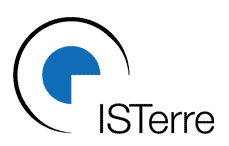 The scientific objective of the laboratory is the physical and chemical study of the planet Earth, based on the observation of natural objects, experimentation and process modelling. The research is structured around 3 main issues:
The scientific objective of the laboratory is the physical and chemical study of the planet Earth, based on the observation of natural objects, experimentation and process modelling. The research is structured around 3 main issues:
1.Can we predict earthquakes, landslides, volcanic eruptions, variations in the Earth’s magnetic field?This prediction requires a long work of observation and data analysis, experimental and numerical modelling of phenomena to understand the observations, as well as work on the application and dissemination of our results.
2.What shapes the Earth’s surface?As a place where internal geodynamics, fault activity and external forcing (erosion, deposition) occur, relief remains a complex object that requires observation, imagery, modelling and theory.
3.How do rocks subject to natural or anthropogenic temporal variations in their environment change?
Mineralogical and geochemical markers are used to quantify and model the evolution of rocks and soils, in response to natural (pressure, temperature, deformation, water…) or anthropogenic (pollution, exploitation of deposits, waste storage,…) imbalances through laboratory experimentation, fine acquisition on large instruments and modelling.
Institut des Sciences de la Terre de Paris
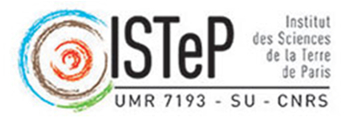 The ISTeP is a Sorbonne University-CNRS joint laboratory with about fifty researchers and permanent professors. The main research themes of the unit are the rheology of the crust and lithosphere, the dynamics of sedimentary basins, mountain ranges and continental margins, and biomineralization as tracers of current and fossil environments. The research conducted within ISTeP is based on an approach ranging from field to themomechanical numerical modelling and physico-chemical analyses using various tools. The Institute has developed numerous national and international collaborations, both academic and industrial, and makes a significant contribution to the training of students in Earth Sciences.
The ISTeP is a Sorbonne University-CNRS joint laboratory with about fifty researchers and permanent professors. The main research themes of the unit are the rheology of the crust and lithosphere, the dynamics of sedimentary basins, mountain ranges and continental margins, and biomineralization as tracers of current and fossil environments. The research conducted within ISTeP is based on an approach ranging from field to themomechanical numerical modelling and physico-chemical analyses using various tools. The Institute has developed numerous national and international collaborations, both academic and industrial, and makes a significant contribution to the training of students in Earth Sciences.
Institut des sciences de l’évolution (Montpellier)
 Research at the Montpellier Institute of Evolution Sciences (ISEM, CNRS – CIRAD – IRD – University of Montpellier) concerns the origin and dynamics of biodiversity, as well as the methods and mechanisms of its evolution . Researchers in this unit are interested in both current and past biodiversity, study a wide range of organisms and environments and combine field, experimental and theoretical approaches. Scientific and societal questioning concerns the responses of biodiversity (organisms and / or communities) to planetary and anthropogenic changes.
Research at the Montpellier Institute of Evolution Sciences (ISEM, CNRS – CIRAD – IRD – University of Montpellier) concerns the origin and dynamics of biodiversity, as well as the methods and mechanisms of its evolution . Researchers in this unit are interested in both current and past biodiversity, study a wide range of organisms and environments and combine field, experimental and theoretical approaches. Scientific and societal questioning concerns the responses of biodiversity (organisms and / or communities) to planetary and anthropogenic changes.
Institut de Systématique, Évolution, Biodiversité (ISYEB) – MNHN Paris
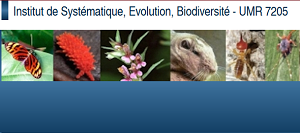 The Institute of Systematics, Evolution, Biodiversity (ISYEB, UMR 7205) is a CNRS unit of the Muséum national d’Histoire naturelle de Paris, also under the supervision of the Pierre et Marie Curie University and the École Pratique des Hautes Études. Its objective is to answer questions concerning the origin of biodiversity, the modalities of species diversification, the establishment of communities in relation to the spatio-temporal evolution of taxa. It is one of the European poles of systematics that contributes significantly to the taxonomy and biology of evolution.
The Institute of Systematics, Evolution, Biodiversity (ISYEB, UMR 7205) is a CNRS unit of the Muséum national d’Histoire naturelle de Paris, also under the supervision of the Pierre et Marie Curie University and the École Pratique des Hautes Études. Its objective is to answer questions concerning the origin of biodiversity, the modalities of species diversification, the establishment of communities in relation to the spatio-temporal evolution of taxa. It is one of the European poles of systematics that contributes significantly to the taxonomy and biology of evolution.
Institut français des sciences et technologies des transports, de l’aménagement et des réseaux
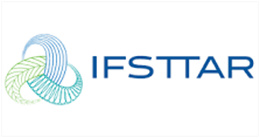 Created on 1 January 2011 from the merger of INRETS and LCPC, IFSTTAR is a public scientific and technological institution under the joint supervision of the Ministry of the Environment, Energy and the Sea and the Ministry of Higher Education and Research. IFSTTAR conducts finalised research and expertise in the fields of transport, infrastructure, natural hazards and the city to improve the living conditions of our fellow citizens and more broadly to promote the sustainable development of our societies.
Created on 1 January 2011 from the merger of INRETS and LCPC, IFSTTAR is a public scientific and technological institution under the joint supervision of the Ministry of the Environment, Energy and the Sea and the Ministry of Higher Education and Research. IFSTTAR conducts finalised research and expertise in the fields of transport, infrastructure, natural hazards and the city to improve the living conditions of our fellow citizens and more broadly to promote the sustainable development of our societies.
Institut Jean-Pierre Bourgin
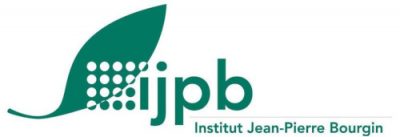 The research teams of the Jean-Pierre Bourgin Institute (INRA, AgroParistech) focus their attention on various essential aspects of the functioning of plants, in connection with plant production and sustainable agriculture. The unit is particularly interested in the evolution and functioning of genomes, the response of plants to the stresses they undergo in their environment and certain current fundamental aspects of plant biology and chemistry, from the cell to the plant. The unit’s work is organized around five scientific poles: Adaptation of plants to their environment; Dynamics and expression of genomes; Morphogenesis, signaling, modeling; Plant wall, function and use; Reproduction and seeds. The unit houses three platforms (plant cytology and imaging; plant chemistry and biochemistry) grouped within a Plant Observatory and two collections of plant resources (Arabidospsis thaliana and Brachypodium distachyon).
The research teams of the Jean-Pierre Bourgin Institute (INRA, AgroParistech) focus their attention on various essential aspects of the functioning of plants, in connection with plant production and sustainable agriculture. The unit is particularly interested in the evolution and functioning of genomes, the response of plants to the stresses they undergo in their environment and certain current fundamental aspects of plant biology and chemistry, from the cell to the plant. The unit’s work is organized around five scientific poles: Adaptation of plants to their environment; Dynamics and expression of genomes; Morphogenesis, signaling, modeling; Plant wall, function and use; Reproduction and seeds. The unit houses three platforms (plant cytology and imaging; plant chemistry and biochemistry) grouped within a Plant Observatory and two collections of plant resources (Arabidospsis thaliana and Brachypodium distachyon).
Institut national de la recherche agronomique (INRA)
 The URZF is a research unit belonging to the “Ecology of Forests, Meadows and Aquatic Environments” department of INRA. His work focuses on studying the response of ecosystems to global changes in order to understand the mechanisms that govern populations of insects (mainly forest insects) that are invasive or expanding as a result of human activities and environmental changes. To develop its research, the URZF brings together entomologists, ecologists, molecular biologists and modelers. Ultimately, this research aims to develop tools for managing organisms in the context of global warming and accelerated globalization.
The URZF is a research unit belonging to the “Ecology of Forests, Meadows and Aquatic Environments” department of INRA. His work focuses on studying the response of ecosystems to global changes in order to understand the mechanisms that govern populations of insects (mainly forest insects) that are invasive or expanding as a result of human activities and environmental changes. To develop its research, the URZF brings together entomologists, ecologists, molecular biologists and modelers. Ultimately, this research aims to develop tools for managing organisms in the context of global warming and accelerated globalization.
Institut Sophia Agrobiotech
 The Sophia Agrobiotech Institute (ISA) of the INRA Centre in Sophia Antipolis has 140 INRA, Nice Sophia Antipolis University and CNRS employees who conduct research related to plant health and the environment. The ISA RMU develops research programmes to reduce agriculture’s dependence on chemical plant protection and industrial fertilizers, while maintaining its competitiveness. The objective of this research is to understand the molecular mechanisms of plants that determine the establishment and fate of interactions with their biotic partners (agronomically important pests: nematodes, oomycetes and symbiotic insects or bacteria). Within the ISA, the work of the “Symbiosis and redox state of the cell” team aims to study the role of the redox state in the establishment, functioning and senescence of nitrogen-fixing symbiosis between legumes and rhizobium-type soil bacteria. Through various partnerships with Maghreb countries, the Symbiose team is also developing research programs on the adaptation of cultivated legumes to environmental constraints such as drought, salinity, or floods.
The Sophia Agrobiotech Institute (ISA) of the INRA Centre in Sophia Antipolis has 140 INRA, Nice Sophia Antipolis University and CNRS employees who conduct research related to plant health and the environment. The ISA RMU develops research programmes to reduce agriculture’s dependence on chemical plant protection and industrial fertilizers, while maintaining its competitiveness. The objective of this research is to understand the molecular mechanisms of plants that determine the establishment and fate of interactions with their biotic partners (agronomically important pests: nematodes, oomycetes and symbiotic insects or bacteria). Within the ISA, the work of the “Symbiosis and redox state of the cell” team aims to study the role of the redox state in the establishment, functioning and senescence of nitrogen-fixing symbiosis between legumes and rhizobium-type soil bacteria. Through various partnerships with Maghreb countries, the Symbiose team is also developing research programs on the adaptation of cultivated legumes to environmental constraints such as drought, salinity, or floods.
Institut de la Transition Environnementale
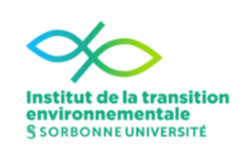 Faced with the intensity and acceleration of global changes that affect ecosystems and the biosphere, and therefore our societies, l’Institut de la transition environnementale Sorbonne Université (SU-ITE) aims to contribute in the long term to the environmental transition by constituting a platform for interactions between science and society. The tracks and solutions explored in the multiple projects, texts and videos offered on this platform are scientific and technical, interdisciplinary, but also societal, political and organizational.
Faced with the intensity and acceleration of global changes that affect ecosystems and the biosphere, and therefore our societies, l’Institut de la transition environnementale Sorbonne Université (SU-ITE) aims to contribute in the long term to the environmental transition by constituting a platform for interactions between science and society. The tracks and solutions explored in the multiple projects, texts and videos offered on this platform are scientific and technical, interdisciplinary, but also societal, political and organizational.
Institut Weizmann des Sciences
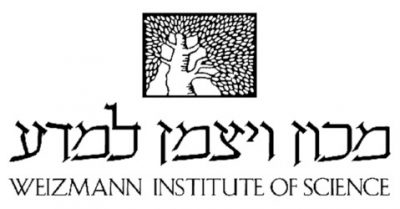 The Weizmann Institute of Sciences is a research university founded in 1934 and located in Rehovot, south of Tel Aviv in Israel. The Weizmann Institute is specialized in the training of masters (graduate students), doctorates (PhD students) and post-doctorates (postdoctoral researchers) in the exact and natural sciences. It is one of the world’s leading multidisciplinary research centers with nearly 3,800 scientists, students, technicians and assistants. The institute is made up of 5 faculties (biochemistry, biology, chemistry, mathematics & computer science, and physics), 17 departments, 50 multidisciplinary research centers and 260 laboratories. In 2019, the Weizmann Institute was ranked 3rd best research institute in the world by the journal Nature in its new “standardized index” which takes into account the quality of research (number of citations in high-impact journals in proportion to number of articles published)
The Weizmann Institute of Sciences is a research university founded in 1934 and located in Rehovot, south of Tel Aviv in Israel. The Weizmann Institute is specialized in the training of masters (graduate students), doctorates (PhD students) and post-doctorates (postdoctoral researchers) in the exact and natural sciences. It is one of the world’s leading multidisciplinary research centers with nearly 3,800 scientists, students, technicians and assistants. The institute is made up of 5 faculties (biochemistry, biology, chemistry, mathematics & computer science, and physics), 17 departments, 50 multidisciplinary research centers and 260 laboratories. In 2019, the Weizmann Institute was ranked 3rd best research institute in the world by the journal Nature in its new “standardized index” which takes into account the quality of research (number of citations in high-impact journals in proportion to number of articles published)
IRISSO
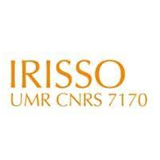 IRISSO is a Joint Research Unit of the CNRS and INRA, associated with the University of Paris-Dauphine/PSL, which includes sociologists, politicians and economists. Born from the merger of the Institute for Interdisciplinary Research in Sociology, Political Science and Economics (IRISES) and the Centre for Studies and Research in the Sociology of Organizations (CERSO), IRISSO integrated a new component in 2015: the Political Communication Laboratory (LCP). Researchers and administrative managers from INRA’s RiTME (Risks, Labour, Contracts, State) unit also joined IRISSO in 2017.
IRISSO is a Joint Research Unit of the CNRS and INRA, associated with the University of Paris-Dauphine/PSL, which includes sociologists, politicians and economists. Born from the merger of the Institute for Interdisciplinary Research in Sociology, Political Science and Economics (IRISES) and the Centre for Studies and Research in the Sociology of Organizations (CERSO), IRISSO integrated a new component in 2015: the Political Communication Laboratory (LCP). Researchers and administrative managers from INRA’s RiTME (Risks, Labour, Contracts, State) unit also joined IRISSO in 2017.
Laboratoire 3SR
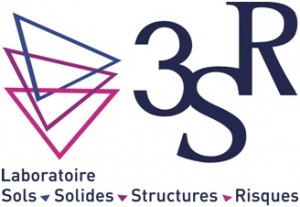 The 3SR laboratory comes from the major mechanical and hydraulic laboratories in the Grenoble region after the Second World War, catalyzed by the development of hydraulic energy. He conducts cutting-edge research in solid mechanics, in the fields of structural engineering, civil engineering structures and materials, energy, transportation and health. It is a joint research unit (UMR 5521) between the CNRS (INSIS), the University of Grenoble Alpes and Grenoble INP. The research is based on both experimentation and modelling, both at the scale of the material and at the scale of the structure. Experimental studies are conducted to understand, analyze, and feed into the development of theoretical and numerical models taking into account physico-mechanical couplings and multi-scale analyses. The research areas addressed are essentially: – environmental and technological risks (underground and surface storage), surface gravity and seismic risks, underground collapses and the durability of sensitive energy-supplying structures, – the mechanical behaviour of complex solid systems and media (granular, porous, entangled, reinforced, biological and bio-inspired) as well as the serviceability of structures and geostructures (particularly under cyclic loading). The 3SR Laboratory has original experimental facilities, often unique in the world, in the mechanics of materials, geo-materials and structures. In terms of modelling, the laboratory has innovative and renowned tools at its disposal, dealing both with aspects at the micro level (e. g. grains) of behaviour and at the macroscopic level (large volume of grains, fibres, massive soil or cracked rocks). The 3SR laboratory employs about 130 people, half of whom are researchers or teacher-researchers or technicians, and the other half are doctoral candidates, post-doctoral fellows, visitors and trainees.
The 3SR laboratory comes from the major mechanical and hydraulic laboratories in the Grenoble region after the Second World War, catalyzed by the development of hydraulic energy. He conducts cutting-edge research in solid mechanics, in the fields of structural engineering, civil engineering structures and materials, energy, transportation and health. It is a joint research unit (UMR 5521) between the CNRS (INSIS), the University of Grenoble Alpes and Grenoble INP. The research is based on both experimentation and modelling, both at the scale of the material and at the scale of the structure. Experimental studies are conducted to understand, analyze, and feed into the development of theoretical and numerical models taking into account physico-mechanical couplings and multi-scale analyses. The research areas addressed are essentially: – environmental and technological risks (underground and surface storage), surface gravity and seismic risks, underground collapses and the durability of sensitive energy-supplying structures, – the mechanical behaviour of complex solid systems and media (granular, porous, entangled, reinforced, biological and bio-inspired) as well as the serviceability of structures and geostructures (particularly under cyclic loading). The 3SR Laboratory has original experimental facilities, often unique in the world, in the mechanics of materials, geo-materials and structures. In terms of modelling, the laboratory has innovative and renowned tools at its disposal, dealing both with aspects at the micro level (e. g. grains) of behaviour and at the macroscopic level (large volume of grains, fibres, massive soil or cracked rocks). The 3SR laboratory employs about 130 people, half of whom are researchers or teacher-researchers or technicians, and the other half are doctoral candidates, post-doctoral fellows, visitors and trainees.
Laboratoire d’Aérologie (LA)
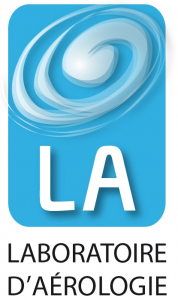 3 research axes structure the activity of the Aerology Laboratory:
3 research axes structure the activity of the Aerology Laboratory:
- The dynamic, thermodynamic and microphysical processes that govern the meteorological atmosphere, from small scale (cloud convection or boundary layer) to synoptic disturbances in mid-latitudes and tropics.
- Physico-chemistry of the troposphere and lower stratosphere with natural and anthropogenic production, transport, flows at the interfaces, evolution and impact of gaseous and particulate chemical species, with more specific developments concerning ozone on the one hand, and nitrogen oxides, volatile organic compounds and carbonaceous aerosols on the other hand.
- Coastal oceanography in its dynamic aspects related to general circulation, forcings and internal disturbances; biogeochemical with associated cycles of the main elements; climatic towards the study of the impact of global change.
Laboratoire de Biochimie et Physiologie Moléculaire des Plantes (B&PMP) – Montpellier
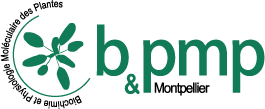 The Joint Research Unit for Biochemistry and Molecular Physiology of Plants (INRA, CNRS, University of Montpellier 2, SupAgro), created about thirty years ago, is working to identify the molecular mechanisms of hydromineral plant nutrition and to analyse their integration into the entire body. The focus is on: (i) membrane and long-distance transport of water and ions (nitrate, potassium, phosphate, iron, zinc, etc.), (ii) storage and metabolism of mineral elements, (iii) signalling to regulate these processes, (iv) development control in response to fluctuations in water and mineral ion availability. A major objective is to determine the integrated role of the molecular mechanisms identified in the adaptation of plants to abiotic environmental stresses (water stress, saline stress, mineral deficiencies, metal toxicity). The plant models are mainly model plants (Arabidopsis thaliana, Medicago truncatula…), with approaches concerning species of agronomic interest (rice, grapevine), and symbioses (mycorrhizae, legumes). The approaches are those of Integrative Biology, and give a large place to genomics (transcriptome, proteome, modeling of gene networks) and functional phenotyping (electrophysiology, isotopes, hydraulics, imaging) or development (root architecture).
The Joint Research Unit for Biochemistry and Molecular Physiology of Plants (INRA, CNRS, University of Montpellier 2, SupAgro), created about thirty years ago, is working to identify the molecular mechanisms of hydromineral plant nutrition and to analyse their integration into the entire body. The focus is on: (i) membrane and long-distance transport of water and ions (nitrate, potassium, phosphate, iron, zinc, etc.), (ii) storage and metabolism of mineral elements, (iii) signalling to regulate these processes, (iv) development control in response to fluctuations in water and mineral ion availability. A major objective is to determine the integrated role of the molecular mechanisms identified in the adaptation of plants to abiotic environmental stresses (water stress, saline stress, mineral deficiencies, metal toxicity). The plant models are mainly model plants (Arabidopsis thaliana, Medicago truncatula…), with approaches concerning species of agronomic interest (rice, grapevine), and symbioses (mycorrhizae, legumes). The approaches are those of Integrative Biology, and give a large place to genomics (transcriptome, proteome, modeling of gene networks) and functional phenotyping (electrophysiology, isotopes, hydraulics, imaging) or development (root architecture).
Laboratoire de Biodiversité et Biotecnologies Microbiennes (LBBM)
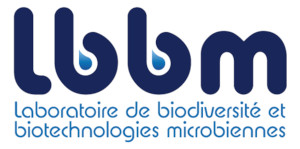 The Laboratoire de Biodiversité et Biotechnologies Microbiennes (LBBM) is a mixed service and research unit (USR3579) of Université de Sorbonne and the CNRS. Its activities are known for biodiversity and the role of microorganisms by focusing on aquatic systems (marine, marine, continental). Our goal is to better understand the biotic and abiotic factors that regulate the activity and diversity of microorganisms in aquatic environments. An important part of our activity is also dedicated to the valorization of our knowledge (biotechnological issues of our collection of microorganisms, development of diagnostic tools …). This activity is based on numerous industrial partnerships and with local authorities. The LBBM brings together expertise in microbial ecology, microbiology, chemical ecology, biotechnology and exploratory pharmacology.
The Laboratoire de Biodiversité et Biotechnologies Microbiennes (LBBM) is a mixed service and research unit (USR3579) of Université de Sorbonne and the CNRS. Its activities are known for biodiversity and the role of microorganisms by focusing on aquatic systems (marine, marine, continental). Our goal is to better understand the biotic and abiotic factors that regulate the activity and diversity of microorganisms in aquatic environments. An important part of our activity is also dedicated to the valorization of our knowledge (biotechnological issues of our collection of microorganisms, development of diagnostic tools …). This activity is based on numerous industrial partnerships and with local authorities. The LBBM brings together expertise in microbial ecology, microbiology, chemical ecology, biotechnology and exploratory pharmacology.
Laboratoire de Biométrie et de Biologie Évolutive (LBBE)
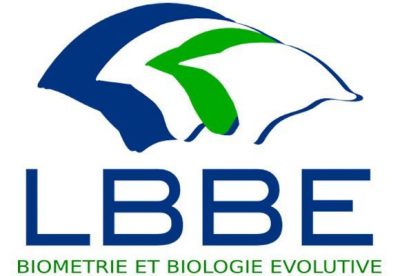 This laboratory was created in 1962 by Jean-Marie Legay to create a biometric sector at the University, then reserved for INRA. Moreover, Jean-Marie Legay came from this institute. Gradually, the laboratory integrated modelling and was one of the main inventors of bioinformatics. At the same time, biological and ecological components have emerged, ensuring continuity between methodological aspects and their fields of use (molecular evolution, quantitative ecology, population dynamics, biomedicine). At the same time, the pedagogical dimensions have been developed at the various university levels. This double continuity has led the national and international community to identify a “Lyon school” of biometrics. He was associated with the CNRS since 1966. This policy has been pursued by successive departments. The initial staff (1962) was half a dozen teacher-researchers, today it is more than 122 permanent and of the same order for doctoral students.
This laboratory was created in 1962 by Jean-Marie Legay to create a biometric sector at the University, then reserved for INRA. Moreover, Jean-Marie Legay came from this institute. Gradually, the laboratory integrated modelling and was one of the main inventors of bioinformatics. At the same time, biological and ecological components have emerged, ensuring continuity between methodological aspects and their fields of use (molecular evolution, quantitative ecology, population dynamics, biomedicine). At the same time, the pedagogical dimensions have been developed at the various university levels. This double continuity has led the national and international community to identify a “Lyon school” of biometrics. He was associated with the CNRS since 1966. This policy has been pursued by successive departments. The initial staff (1962) was half a dozen teacher-researchers, today it is more than 122 permanent and of the same order for doctoral students.
Laboratoire Eau Environnement et Systèmes Urbains (LEESU)
 Leesu (Laboratoire Eau Environnement et Systèmes Urbains at the Ecole Nationale des Ponts et Chaussées) is an interdisciplinary public research laboratory under the supervision of the Université Paris-Est Créteil, the École des Ponts ParisTech and AgroParisTech, whose purpose is the socio-technical management of urban water. The studies it conducts, in partnership with local authorities in particular, aim to promote innovation in this field and to characterise the conditions for successful appropriation by users. He has opened himself to the challenges of the circular economy in urban areas.
Leesu (Laboratoire Eau Environnement et Systèmes Urbains at the Ecole Nationale des Ponts et Chaussées) is an interdisciplinary public research laboratory under the supervision of the Université Paris-Est Créteil, the École des Ponts ParisTech and AgroParisTech, whose purpose is the socio-technical management of urban water. The studies it conducts, in partnership with local authorities in particular, aim to promote innovation in this field and to characterise the conditions for successful appropriation by users. He has opened himself to the challenges of the circular economy in urban areas.
Laboratoire d’Écologie Alpine (LECA) – Grenoble
 The Alpine Ecology Laboratory is a Joint Research Unit (UMR 5553) bringing together researchers from the CNRS, the University of Grenoble Alpes and the University of Savoy. The aim of the unit’s research is to understand how ecosystems function and maintain biodiversity and predict their response to change using concepts and methods from disciplines such as ecology and evolutionary biology. LECA develops integrated research ranging from the molecular mechanisms of adaptation to the overall impact of the physical environment on ecosystem functioning and biodiversity maintenance.
The Alpine Ecology Laboratory is a Joint Research Unit (UMR 5553) bringing together researchers from the CNRS, the University of Grenoble Alpes and the University of Savoy. The aim of the unit’s research is to understand how ecosystems function and maintain biodiversity and predict their response to change using concepts and methods from disciplines such as ecology and evolutionary biology. LECA develops integrated research ranging from the molecular mechanisms of adaptation to the overall impact of the physical environment on ecosystem functioning and biodiversity maintenance.
Laboratoire d’Informatique et Systèmes (CNRS)
 [The LIS (Laboratory of Computer Science and Systems) is a Joint Research Unit (UMR) under the supervision of the National Center for Scientific Research (CNRS) attached to the Institute of Information Sciences and their Interactions (INS2I) , the University of Aix-Marseille (AMU) and the University of Toulon (UTLN). The École Centrale de Marseille is also a partner of LIS. Its premises are located on the Saint-Jérôme and Luminy campuses in Marseille and on the University of Toulon campus. LIS conducts fundamental and applied research in the fields of computer science, automation, signal and image. It is made up of 20 research teams and structured into 4 poles: the Computing pole, the Data Sciences pole, the Systems Analysis and Control pole and the Signal and Image pole.
[The LIS (Laboratory of Computer Science and Systems) is a Joint Research Unit (UMR) under the supervision of the National Center for Scientific Research (CNRS) attached to the Institute of Information Sciences and their Interactions (INS2I) , the University of Aix-Marseille (AMU) and the University of Toulon (UTLN). The École Centrale de Marseille is also a partner of LIS. Its premises are located on the Saint-Jérôme and Luminy campuses in Marseille and on the University of Toulon campus. LIS conducts fundamental and applied research in the fields of computer science, automation, signal and image. It is made up of 20 research teams and structured into 4 poles: the Computing pole, the Data Sciences pole, the Systems Analysis and Control pole and the Signal and Image pole.
Laboratoire Dynamiques Sociales et Recomposition des Espaces (LADYSS)
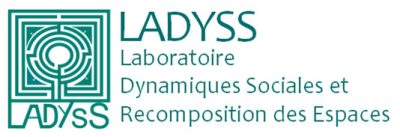 The LADYSS is a multidisciplinary laboratory (geography, economics, sociology, anthropology) dedicated to the cross-analysis of social dynamics and the recomposition of spaces. Environmental issues occupy a large place in the research of these members. Workshop 5 brings together researchers working on living organisms (fauna, flora) in connection with territories, around questions at the articulation between ecological functioning and social issues. The objective is to assess the state of biodiversity through the development of indicators and to question the methods of appropriation of knowledge between scientific actors and local actors in order to design more participatory environmental policies.
The LADYSS is a multidisciplinary laboratory (geography, economics, sociology, anthropology) dedicated to the cross-analysis of social dynamics and the recomposition of spaces. Environmental issues occupy a large place in the research of these members. Workshop 5 brings together researchers working on living organisms (fauna, flora) in connection with territories, around questions at the articulation between ecological functioning and social issues. The objective is to assess the state of biodiversity through the development of indicators and to question the methods of appropriation of knowledge between scientific actors and local actors in order to design more participatory environmental policies.
Laboratoire Écologie, Systématique, Évolution – Orsay
 The Ecology, Systematics and Evolution (ESE) unit, UMR 8079 – University of Paris-Sud / CNRS / AgroParisTech, conducts research in ecology and evolution that aims to study the origin and dynamics of biodiversity as well as the evolution and functioning of ecosystems. The approaches used for these objectives are based on a synergy between in situ observations, experimentation and mathematical modelling as a tool for understanding, synthesis and projection. Some of the unit’s research is closely linked to societal concerns. Indeed, the objective of this research is to contribute to providing support and decision-making tools for biodiversity and socio-agro-ecosystem managers. The study of the consequences of global changes, particularly climate change, on populations, communities and ecosystems and their response to these changes is a cross-cutting theme in the SEA unit. It consists in particular in studying the genetic and phenotypic adaptation processes involved, but also the modalities of implementing management measures through public policies. As part of their research, the unit’s researchers and teacher-researchers establish numerous interactions within networks with other teams of ecologists and evolutionists at the local level (within the framework of FR3284-IDEEV, Paris Centre units), and at the national (particularly GDR) and international levels. These interactions are also open to researchers from other disciplines, including researchers in the humanities and social sciences, in order to increase our ability to respond to different societal issues. The BASC LABEX in which the unit is involved facilitates exchanges with researchers in the human sciences but also with specialists in climate sciences and agronomists to meet the sustainability challenges of socio-agro-eco-ecosystems.
The Ecology, Systematics and Evolution (ESE) unit, UMR 8079 – University of Paris-Sud / CNRS / AgroParisTech, conducts research in ecology and evolution that aims to study the origin and dynamics of biodiversity as well as the evolution and functioning of ecosystems. The approaches used for these objectives are based on a synergy between in situ observations, experimentation and mathematical modelling as a tool for understanding, synthesis and projection. Some of the unit’s research is closely linked to societal concerns. Indeed, the objective of this research is to contribute to providing support and decision-making tools for biodiversity and socio-agro-ecosystem managers. The study of the consequences of global changes, particularly climate change, on populations, communities and ecosystems and their response to these changes is a cross-cutting theme in the SEA unit. It consists in particular in studying the genetic and phenotypic adaptation processes involved, but also the modalities of implementing management measures through public policies. As part of their research, the unit’s researchers and teacher-researchers establish numerous interactions within networks with other teams of ecologists and evolutionists at the local level (within the framework of FR3284-IDEEV, Paris Centre units), and at the national (particularly GDR) and international levels. These interactions are also open to researchers from other disciplines, including researchers in the humanities and social sciences, in order to increase our ability to respond to different societal issues. The BASC LABEX in which the unit is involved facilitates exchanges with researchers in the human sciences but also with specialists in climate sciences and agronomists to meet the sustainability challenges of socio-agro-eco-ecosystems.
Laboratoire des Écoulements Géophysiques et Industriels (LEGI)
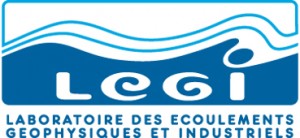 LEGI, part of the University of Grenoble Alpes Community, brings together more than 150 people, 60 of whom are permanent, and as many doctoral and post-doctoral students. Research activities combine modelling, experimentation and high-performance numerical simulation in fluid mechanics. These activities combine very fundamental studies on turbulence with many application areas related to environmental as well as industrial issues, such as water treatment, hydro or wind power, hydrogen storage. The MEIGE team (Modelling, Experiments and Instrumentation for Geophysics and the Environment) studies more particularly the dynamics of natural environments such as the ocean, atmosphere, rivers and coastal zones. The team is interested in problems of coastal erosion and sediment transport, complex relief air pollution, and wave dynamics and turbulence in a density stratified environment. Several turntables, including the large 15 m diameter “Coriolis” platform, allow the Coriolis effects to be reproduced in the laboratory.
LEGI, part of the University of Grenoble Alpes Community, brings together more than 150 people, 60 of whom are permanent, and as many doctoral and post-doctoral students. Research activities combine modelling, experimentation and high-performance numerical simulation in fluid mechanics. These activities combine very fundamental studies on turbulence with many application areas related to environmental as well as industrial issues, such as water treatment, hydro or wind power, hydrogen storage. The MEIGE team (Modelling, Experiments and Instrumentation for Geophysics and the Environment) studies more particularly the dynamics of natural environments such as the ocean, atmosphere, rivers and coastal zones. The team is interested in problems of coastal erosion and sediment transport, complex relief air pollution, and wave dynamics and turbulence in a density stratified environment. Several turntables, including the large 15 m diameter “Coriolis” platform, allow the Coriolis effects to be reproduced in the laboratory.
Laboratoire Environnement, Ville Société du CNRS (Université de Lyon)
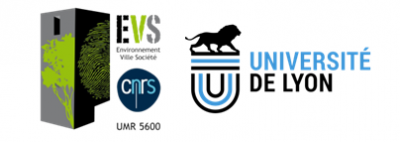 The EVS laboratory brings together nearly 150 permanent staff and 140 doctoral students, research communities belonging to the educational and research institutions of the Lyon Saint-Etienne cluster and working in the field of territorial and environmental sciences (geography, engineering, urban planning, environmental law, architecture). The researchers of the “Environment, City and Society” laboratory deal with the ways in which contemporary and past societies develop and protect their environments. These modalities are observed in terms of change, action, transformation, evolution, becoming. Questions relating to “transitions” and “global change” are approached as modalities for the mutual appropriation of the world and societies by considering together dimensions that appear strictly inseparable: social, territorial, environmental, ecological; dimensions that are all manifestations of the same world and its state in a time “t” of its history. The laboratory is organized into 8 workshops that constitute as many research polarities around the dynamics of change and the associated territorial and environmental issues. For example, Workshop 5 focuses on “Environmental changes: measurement and assessment of environmental changes (frequency, intensity, magnitude), functional and multi-temporal approaches” and Workshop 8 “Geomatics research. Methods, models and spatio-temporal systems, environment and society”.
The EVS laboratory brings together nearly 150 permanent staff and 140 doctoral students, research communities belonging to the educational and research institutions of the Lyon Saint-Etienne cluster and working in the field of territorial and environmental sciences (geography, engineering, urban planning, environmental law, architecture). The researchers of the “Environment, City and Society” laboratory deal with the ways in which contemporary and past societies develop and protect their environments. These modalities are observed in terms of change, action, transformation, evolution, becoming. Questions relating to “transitions” and “global change” are approached as modalities for the mutual appropriation of the world and societies by considering together dimensions that appear strictly inseparable: social, territorial, environmental, ecological; dimensions that are all manifestations of the same world and its state in a time “t” of its history. The laboratory is organized into 8 workshops that constitute as many research polarities around the dynamics of change and the associated territorial and environmental issues. For example, Workshop 5 focuses on “Environmental changes: measurement and assessment of environmental changes (frequency, intensity, magnitude), functional and multi-temporal approaches” and Workshop 8 “Geomatics research. Methods, models and spatio-temporal systems, environment and society”.
Laboratoire Environnements, DYnamiques et TErritoires de la Montagne (EDYTEM)
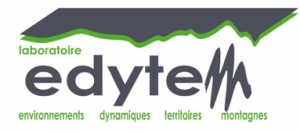 Created in 2003, EDYTEM is a joint research unit of the Savoie Mont Blanc University and the CNRS. It was born from the desire to bring together researchers in geosciences (geology, hydrogeology, geomorphology) and human and social sciences (geography) in order to solve, through a transdisciplinary vision, the environmental and societal problems specific to mountain areas. Today, it occupies a strong and original place, between geosciences and human and social sciences, in the field of environmental sciences and more particularly in the Ecology and Environment Institute (INEE) of the CNRS and the Astrophysics Physics, Geosciences and Environment PAGE of the COMUE Université Grenoble Alpes (CUGA).
Created in 2003, EDYTEM is a joint research unit of the Savoie Mont Blanc University and the CNRS. It was born from the desire to bring together researchers in geosciences (geology, hydrogeology, geomorphology) and human and social sciences (geography) in order to solve, through a transdisciplinary vision, the environmental and societal problems specific to mountain areas. Today, it occupies a strong and original place, between geosciences and human and social sciences, in the field of environmental sciences and more particularly in the Ecology and Environment Institute (INEE) of the CNRS and the Astrophysics Physics, Geosciences and Environment PAGE of the COMUE Université Grenoble Alpes (CUGA).
Laboratoire Epigénétique et Signalisation Cellulaire (Institut Albert Bonniot) – Grenoble
 The research of the team led by Saadi Khochbin at the IAB (Institut Albert Bonniot, Centre de recherche Université Grenoble Alpes, Inserm U1209, CNRS UMR 5309) aims to understand how the genome communicates with its close or distant environment to control its functions. The team’s discoveries range from the identification and functional characterization of new enzymes regulating chemical changes in histones, to chemical changes in histones themselves, factors recognizing modified histones and histone variants. In this context, the team has developed an original line of research aimed at understanding the molecular mechanisms involved in male genome programming, an obscure but fundamental and preserved process. This research not only unveils the molecular basis for the establishment of the male epigenome, but also generates important new concepts applicable to epigenetics and chromatin biology in general. This research program has also led to unexpected applications in the field of cancer. Extensive research is being developed in this laboratory, revealing new oncogenic mechanisms, powerful biomarkers and new therapeutic targets. All this research activity is conducted on the basis of major international collaborations and multidisciplinary approaches, including structural biology, proteomics, genomics, biological chemistry and clinical expertise. This is evidenced by the publications coordinated by this team, testifying to the collaborative effort of several leading international laboratories.
The research of the team led by Saadi Khochbin at the IAB (Institut Albert Bonniot, Centre de recherche Université Grenoble Alpes, Inserm U1209, CNRS UMR 5309) aims to understand how the genome communicates with its close or distant environment to control its functions. The team’s discoveries range from the identification and functional characterization of new enzymes regulating chemical changes in histones, to chemical changes in histones themselves, factors recognizing modified histones and histone variants. In this context, the team has developed an original line of research aimed at understanding the molecular mechanisms involved in male genome programming, an obscure but fundamental and preserved process. This research not only unveils the molecular basis for the establishment of the male epigenome, but also generates important new concepts applicable to epigenetics and chromatin biology in general. This research program has also led to unexpected applications in the field of cancer. Extensive research is being developed in this laboratory, revealing new oncogenic mechanisms, powerful biomarkers and new therapeutic targets. All this research activity is conducted on the basis of major international collaborations and multidisciplinary approaches, including structural biology, proteomics, genomics, biological chemistry and clinical expertise. This is evidenced by the publications coordinated by this team, testifying to the collaborative effort of several leading international laboratories.
Laboratoire Évolution Paris Seine
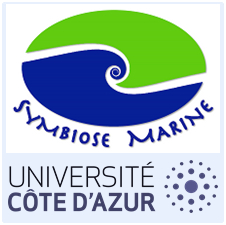 The Evolution Paris-Seine laboratory (UMR 7138) consists of 7 research teams and a platform, representing 32 researchers or teacher-researchers, 18 engineers or technicians, and 19 doctoral or post-doctoral positions. The laboratory is mainly interested in understanding the molecular mechanisms of evolution. Through modern biological tools, the laboratory undertakes to understand how organisms interact with their environments, on both an adaptive and evolutionary scale. Because of the themes studied in the unit, the study of biodiversity, and in particular the mechanisms at its origin, is studied at all possible levels, from genes to genomes, from cells to organisms, or from populations to species. Each team favours one of these levels, but always with the aim of achieving an integrated vision of adaptive and evolving processes. Different organisms are studied, such as ctenophores, cnidarians, crustaceans, molluscs or vertebrates, in eukaryotes and, bacteria as well as archaea in prokaryotes. This diversity of organisms is associated with a diversity of ecosystems, including the Antarctic coast, mangroves and the Mediterranean coast.
The Evolution Paris-Seine laboratory (UMR 7138) consists of 7 research teams and a platform, representing 32 researchers or teacher-researchers, 18 engineers or technicians, and 19 doctoral or post-doctoral positions. The laboratory is mainly interested in understanding the molecular mechanisms of evolution. Through modern biological tools, the laboratory undertakes to understand how organisms interact with their environments, on both an adaptive and evolutionary scale. Because of the themes studied in the unit, the study of biodiversity, and in particular the mechanisms at its origin, is studied at all possible levels, from genes to genomes, from cells to organisms, or from populations to species. Each team favours one of these levels, but always with the aim of achieving an integrated vision of adaptive and evolving processes. Different organisms are studied, such as ctenophores, cnidarians, crustaceans, molluscs or vertebrates, in eukaryotes and, bacteria as well as archaea in prokaryotes. This diversity of organisms is associated with a diversity of ecosystems, including the Antarctic coast, mangroves and the Mediterranean coast.
Laboratoire de Génétique, Reproduction et Développement (GreD) – Clermont-Ferrand
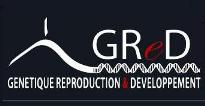 The Genetics Laboratory of the Blaise Pascal University in Clermont-Ferrand was created in 1967 by the arrival, from Orsay, of Ph. L’Héritier, J-C Bregliano, and Annie Fleuriet. It was quickly expanded by the recruitment of researchers and teacher-researchers. Thanks to the grouping of this laboratory with other local teams, a CNRS Associated Research Unit was created in 1983, bringing together 6 laboratories and about 50 researchers. From 1991, this unit became a Joint Research Unit and, in 2008, “Laboratoire de Génétique, Reproduction et Développement” (GreD), associated with the CNRS and INSERM, with 10 teams comprising 130 people of all categories.
The Genetics Laboratory of the Blaise Pascal University in Clermont-Ferrand was created in 1967 by the arrival, from Orsay, of Ph. L’Héritier, J-C Bregliano, and Annie Fleuriet. It was quickly expanded by the recruitment of researchers and teacher-researchers. Thanks to the grouping of this laboratory with other local teams, a CNRS Associated Research Unit was created in 1983, bringing together 6 laboratories and about 50 researchers. From 1991, this unit became a Joint Research Unit and, in 2008, “Laboratoire de Génétique, Reproduction et Développement” (GreD), associated with the CNRS and INSERM, with 10 teams comprising 130 people of all categories.
Laboratoire de Géologie de Lyon : Terre, Planète, Environnement
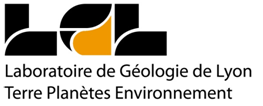 The Laboratoire de Géologie de Lyon: Terre, Planète, Environnement (LGL-TPE, UMR 5276 CNRS) brings together the research teams of the École Normale Supérieure de Lyon and the Claude Bernard-Lyon 1 University in the field of Earth and Solar System Sciences. This laboratory is grouped with the Lyon Astrophysical Research Centre in the Lyon Observatory. Coming from the grouping of “geologists” from two different laboratories, and with 140 employees, the LGE-TPE deals with a wide range of fields of Earth and solar system sciences: young Earth and early events in the solar system, structure and mineralogy of the Earth’s interior, geology of planetary surfaces, formation of mountain ranges, primitive life and biosignatures, paleoenvironment.
The Laboratoire de Géologie de Lyon: Terre, Planète, Environnement (LGL-TPE, UMR 5276 CNRS) brings together the research teams of the École Normale Supérieure de Lyon and the Claude Bernard-Lyon 1 University in the field of Earth and Solar System Sciences. This laboratory is grouped with the Lyon Astrophysical Research Centre in the Lyon Observatory. Coming from the grouping of “geologists” from two different laboratories, and with 140 employees, the LGE-TPE deals with a wide range of fields of Earth and solar system sciences: young Earth and early events in the solar system, structure and mineralogy of the Earth’s interior, geology of planetary surfaces, formation of mountain ranges, primitive life and biosignatures, paleoenvironment.
Laboratoire de pollution atmosphérique (INRA) – Nancy
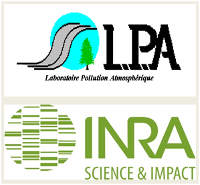 Within the INRA-Nancy Forest Research Centre, the Air Pollution Laboratory was responsible for ecotoxicological research on the effects of air pollutants on French vegetation, both within and outside metropolitan France. It should be recalled that this INRA laboratory, the only French laboratory working since 1975 at 100% of its time on the effects of air pollution on plants, has therefore been led to carry out its scientific activities and research in 3 fields:
Within the INRA-Nancy Forest Research Centre, the Air Pollution Laboratory was responsible for ecotoxicological research on the effects of air pollutants on French vegetation, both within and outside metropolitan France. It should be recalled that this INRA laboratory, the only French laboratory working since 1975 at 100% of its time on the effects of air pollution on plants, has therefore been led to carry out its scientific activities and research in 3 fields:
- A fundamental area of research on the physiological impact of different air pollutants on plants. This fundamental research has been directed towards the plant bioindication of air pollution (acid rain, ozone, nitrogen compounds, heavy metals, organic compounds, etc.) to characterize and map it.
- A field of finalised research and transfer in collaboration with many other French and foreign laboratories, in order to study the causes and consequences for the environments (natural, anthropised) of atmospheric pollution present in the field.
- A field of expertise and popularization where the laboratory’s skills have been used in the context of expertise and consultancy, conferences, teaching, training, documentation, participation in fairs and exhibitions, etc…
Laboratoire Évolution Paris-Seine
 The Evolution Paris-Seine laboratory (UMR 7138) consists of 7 research teams and a platform, representing 32 researchers or teacher-researchers, 18 engineers or technicians, and 19 doctoral candidates or postdoctoral positions. The laboratory is mainly interested in understanding the molecular mechanisms of evolution. Through modern biological tools, the laboratory undertakes to understand how organisms interact with their environments, on both an adaptive and evolutionary scale. Because of the themes studied in the unit, the study of biodiversity, and in particular the mechanisms at its origin, is studied at all possible levels, from genes to genomes, from cells to organisms, or from populations to species. Each team favours one of these levels, but always with the aim of achieving an integrated vision of adaptive and evolving processes. Different organisms are studied, such as ctenophores, cnidarians, crustaceans, molluscs or vertebrates, in eukaryotes and, bacteria as well as archaea in prokaryotes. This diversity of organisms is associated with a diversity of ecosystems, including the Antarctic coast, mangroves and the Mediterranean coast.
The Evolution Paris-Seine laboratory (UMR 7138) consists of 7 research teams and a platform, representing 32 researchers or teacher-researchers, 18 engineers or technicians, and 19 doctoral candidates or postdoctoral positions. The laboratory is mainly interested in understanding the molecular mechanisms of evolution. Through modern biological tools, the laboratory undertakes to understand how organisms interact with their environments, on both an adaptive and evolutionary scale. Because of the themes studied in the unit, the study of biodiversity, and in particular the mechanisms at its origin, is studied at all possible levels, from genes to genomes, from cells to organisms, or from populations to species. Each team favours one of these levels, but always with the aim of achieving an integrated vision of adaptive and evolving processes. Different organisms are studied, such as ctenophores, cnidarians, crustaceans, molluscs or vertebrates, in eukaryotes and, bacteria as well as archaea in prokaryotes. This diversity of organisms is associated with a diversity of ecosystems, including the Antarctic coast, mangroves and the Mediterranean coast.
Laboratoire de Glaciologie et Géophysique de l’Environnement (LGGE)
 The Laboratory of Glaciology and Geophysics of the Environment (LGGE, UMR 5183), created in 1958, brings together about 150 people to conduct research on snow and ice, glaciers, climate – atmosphere, ice and ocean – and the environment. For more than 50 years, the LGGE has built its scientific reputation on the study of climate and atmospheric composition. These studies focus on the present but also on past evolutions through the archives that constitute the snow and ice accumulated over time. However, the LGGE has other very competitive skills focused on snow and ice, such as the physical and mechanical study of ice material, air-snow chemical exchanges and the acquisition of data in the field and by satellite. The research conducted combines technological and analytical developments with a numerical modelling approach covering a variety of fields, from the atmosphere to ice mass flows and, more recently, to the ocean. The Antarctic and Arctic polar regions are privileged fields of action, but the LGGE’s experience also extends to mountain areas (study of alpine, Andean and Himalayan glaciers, pollution of alpine valleys) and oceans (role of the ocean in climate balances, medium-term forecast of ocean circulation). These studies contribute to the understanding of important scientific issues that are often societal issues such as the greenhouse effect, climate and environmental variability, cryospheric mass balance and sea level, global and regional pollution, and glacial hazards.
The Laboratory of Glaciology and Geophysics of the Environment (LGGE, UMR 5183), created in 1958, brings together about 150 people to conduct research on snow and ice, glaciers, climate – atmosphere, ice and ocean – and the environment. For more than 50 years, the LGGE has built its scientific reputation on the study of climate and atmospheric composition. These studies focus on the present but also on past evolutions through the archives that constitute the snow and ice accumulated over time. However, the LGGE has other very competitive skills focused on snow and ice, such as the physical and mechanical study of ice material, air-snow chemical exchanges and the acquisition of data in the field and by satellite. The research conducted combines technological and analytical developments with a numerical modelling approach covering a variety of fields, from the atmosphere to ice mass flows and, more recently, to the ocean. The Antarctic and Arctic polar regions are privileged fields of action, but the LGGE’s experience also extends to mountain areas (study of alpine, Andean and Himalayan glaciers, pollution of alpine valleys) and oceans (role of the ocean in climate balances, medium-term forecast of ocean circulation). These studies contribute to the understanding of important scientific issues that are often societal issues such as the greenhouse effect, climate and environmental variability, cryospheric mass balance and sea level, global and regional pollution, and glacial hazards.
Laboratoire de Recherche Historique Rhône-Alpes
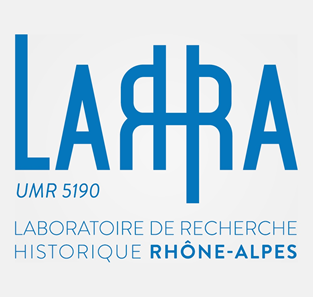 Created in 2002, the Rhône-Alpes Historical Research Laboratory (UMR 5190) is a Joint Research Unit of the CNRS, under the supervision of the Lumière-Lyon 2, Jean Moulin-Lyon 3, Grenoble Alpes and ENS de Lyon Universities. It is composed of 6 CNRS researchers, 79 teacher-researchers, 14 engineers, technicians and administrative staff, 3 post-docs and researchers, 140 doctoral students and 97 associates.
Created in 2002, the Rhône-Alpes Historical Research Laboratory (UMR 5190) is a Joint Research Unit of the CNRS, under the supervision of the Lumière-Lyon 2, Jean Moulin-Lyon 3, Grenoble Alpes and ENS de Lyon Universities. It is composed of 6 CNRS researchers, 79 teacher-researchers, 14 engineers, technicians and administrative staff, 3 post-docs and researchers, 140 doctoral students and 97 associates.
It is organized into six axes: Public action and the urban worlds, “Art, images, societies”; “Gender”; “Religions and beliefs”; “Knowledge. Actors, dynamics, spaces”; “Territories, economy, societal issues”. And 3 transversal aspects: “Images and memory sounds workshop”; “War societies workshop”; “Digital history centre”.
LARHRA is specialized in history and art history, for both modern and contemporary periods. From the first modernity to the present time, LARHRA’s expertise covers diverse geographical and thematic areas, from Latin America to the Maghreb and the Middle East, via France and Western Europe in the broadest sense: from corporate history to the Inquisition, from urban mobility to gender studies, from architecture to decorative arts, from medical knowledge to technical education, from territory and the environment to religious syncretism, from memory and heritage buildings to contemporary media, etc.
A generalist laboratory through the diversity of its themes, it shares a common approach centred on actors, taking into account all dimensions of social issues and the convergence of the legacies of research in history and art history in Lyon and Grenoble for more than half a century. It participates in the methodological renewals of historical research induced by the development of digital technologies, focusing its research in this field on the structuring and modelling of data, in accordance with FAIR principles.
Laboratory of Marine Environment Sciences (LEMAR)
 LEMAR, Laboratoire des Sciences de l’Environnement Marin (UMR 6539 UBO/CNRS/IRD/IFREMER), is a resolutely interdisciplinary laboratory that brings together ecologists, biologists, biogeochemists, chemists, physicists and marine environmental lawyers. Its objectives are (1) to conduct research on fundamental or socially important topics; (2) to contribute to the achievement of sustainable development objectives in countries of both the North and the South; (3) to provide innovations in connection with the economic world and results in support of public policies; (4) to be involved in interdisciplinary training in the field of marine and coastal sciences
LEMAR, Laboratoire des Sciences de l’Environnement Marin (UMR 6539 UBO/CNRS/IRD/IFREMER), is a resolutely interdisciplinary laboratory that brings together ecologists, biologists, biogeochemists, chemists, physicists and marine environmental lawyers. Its objectives are (1) to conduct research on fundamental or socially important topics; (2) to contribute to the achievement of sustainable development objectives in countries of both the North and the South; (3) to provide innovations in connection with the economic world and results in support of public policies; (4) to be involved in interdisciplinary training in the field of marine and coastal sciences
Laboratoire des Sciences du Climat et de l’Environnement (LSCE)
 The LSCE is a joint research unit (UMR 8212) between the CEA, the CNRS and the University of Versailles Saint-Quentin (UVSQ), located on two sites (CEA-Orme des Merisiers campus and CNRS Gif-sur- Yvette). It is part of the Pierre Simon Laplace Institute (IPSL). The LSCE brings together around 300 researchers, engineers and administrative agents, including 150 permanent staff from the 3 supervisory bodies and several dozen postgraduate students. Since January 2015, the LSCE has been organized into three scientific themes: (i) Archives and Tracers (ii) Biogeochemical Cycles and Transfers in the Environment (iii) Climate and Cycles – Modeling of their variability and their interactions. Each of these themes brings together between 4 and 7 research teams formed around common tools and/or research topics.
The LSCE is a joint research unit (UMR 8212) between the CEA, the CNRS and the University of Versailles Saint-Quentin (UVSQ), located on two sites (CEA-Orme des Merisiers campus and CNRS Gif-sur- Yvette). It is part of the Pierre Simon Laplace Institute (IPSL). The LSCE brings together around 300 researchers, engineers and administrative agents, including 150 permanent staff from the 3 supervisory bodies and several dozen postgraduate students. Since January 2015, the LSCE has been organized into three scientific themes: (i) Archives and Tracers (ii) Biogeochemical Cycles and Transfers in the Environment (iii) Climate and Cycles – Modeling of their variability and their interactions. Each of these themes brings together between 4 and 7 research teams formed around common tools and/or research topics.
Laboratoire d’Hydraulique Environnementale (LHE)
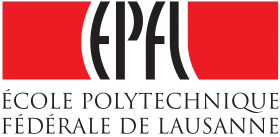 The Laboratory of Environmental Hydraulics (LHE) is a laboratory of the École Polytechnique Fédérale de Lausanne (EPFL). Created in 1928 by Alfred Stucky (with the name Laboratoire d’Essais Hydrauliques), it has long been a research centre focused on the hydraulics of large hydroelectric facilities. With the arrival of Professor Walter Graf in 1973, the emphasis was placed on understanding hydrodynamic phenomena in the environment. Currently, LHE’s research focuses on particle transport in a fluid and flow dynamics. Environmental applications mainly relate to problems encountered in the Alps (sediment transport, rapid flows such as avalanches and debris flows). Industrial applications include the transport of granular or pasty materials.
The Laboratory of Environmental Hydraulics (LHE) is a laboratory of the École Polytechnique Fédérale de Lausanne (EPFL). Created in 1928 by Alfred Stucky (with the name Laboratoire d’Essais Hydrauliques), it has long been a research centre focused on the hydraulics of large hydroelectric facilities. With the arrival of Professor Walter Graf in 1973, the emphasis was placed on understanding hydrodynamic phenomena in the environment. Currently, LHE’s research focuses on particle transport in a fluid and flow dynamics. Environmental applications mainly relate to problems encountered in the Alps (sediment transport, rapid flows such as avalanches and debris flows). Industrial applications include the transport of granular or pasty materials.
Laboratoire HydroSciences Montpellier (HSM)
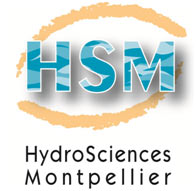 The HydroSciences Montpellier Laboratory (HSM, www.hydrosciences.org) is a joint research unit (UMR 5569) (IRD, CNRS and University of Montpellier), attached to the Observatoire des Sciences de l’Univers – Observatoire de Recherche Méditerranéen de l’Environnement (OSU OREME). HSM is fully invested in water science research that covers areas ranging from biogeochemistry to extreme events, groundwater, hydrological cycle studies and water pathogens and associated health issues.
The HydroSciences Montpellier Laboratory (HSM, www.hydrosciences.org) is a joint research unit (UMR 5569) (IRD, CNRS and University of Montpellier), attached to the Observatoire des Sciences de l’Univers – Observatoire de Recherche Méditerranéen de l’Environnement (OSU OREME). HSM is fully invested in water science research that covers areas ranging from biogeochemistry to extreme events, groundwater, hydrological cycle studies and water pathogens and associated health issues.
HSM carries out most of its scientific activity in the Mediterranean and tropical regions, with a strong involvement in the International Joint Laboratory PICCASS-EAU, the observatories (AMMA-CATCH, KARST, RBV, GLACIOCLIM, OHM) and the CRITEX Teamx.
Laboratoire Interdisciplinaire de Physique (LIPhy)
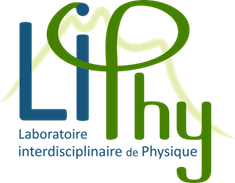 The LIPhy, named in 2011, is a direct result of the “Physical Spectrometry Laboratory” created in 1966. This laboratory is a joint research unit of the UGA and the CNRS, which includes 55 permanent researchers, 33 technicians and about 50 thesis and post-doctoral students. There are 7 research teams that share three main themes of activity: (i) Complex matter with experimental, theoretical studies on soft or amorphous matter (colloids, polymers, gels, etc.) (ii) Biophysics with work on the physical properties of cells (mobility, adhesion, contraction, etc.), the study of suspensions of bio-fluids such as blood, as well as the analysis of information processes in living systems at the molecular and cellular level. (iii) Optics and its applications with the development of highly sensitive instruments for measurements of the absorption spectrum of small molecules in the gas phase, which are very useful in geophysics, astrophysics and medicine. New imaging methods are also being developed.
The LIPhy, named in 2011, is a direct result of the “Physical Spectrometry Laboratory” created in 1966. This laboratory is a joint research unit of the UGA and the CNRS, which includes 55 permanent researchers, 33 technicians and about 50 thesis and post-doctoral students. There are 7 research teams that share three main themes of activity: (i) Complex matter with experimental, theoretical studies on soft or amorphous matter (colloids, polymers, gels, etc.) (ii) Biophysics with work on the physical properties of cells (mobility, adhesion, contraction, etc.), the study of suspensions of bio-fluids such as blood, as well as the analysis of information processes in living systems at the molecular and cellular level. (iii) Optics and its applications with the development of highly sensitive instruments for measurements of the absorption spectrum of small molecules in the gas phase, which are very useful in geophysics, astrophysics and medicine. New imaging methods are also being developed.
Laboratoire Interdisciplinaire des Environnements Continentaux (LIEC)
 The LIEC is positioned on the general theme of the study of highly anthropized environments, whether terrestrial or aquatic. The plurality of skills present in the unit makes it possible to carry out multidisciplinary research approaches around ecological and biogeochemical processes and at different scales. Interactions between specialists in the physico-chemical component of environments and biologists-ecologists lead to the realization of integrated studies of the various ecosystems studied. The primary objective of LIEC is to understand the functioning of continental ecosystems strongly disturbed by human activity, with the aim of their rehabilitation. To this end, LIEC implements interdisciplinary research combining the concepts and methods of environmental mineralogy, soil science, microbial ecology, colloidal physico-chemistry, ecotoxicology, ecology functional. The LIEC is made up of 5 teams: (1) Ecology of stress, (2) Environmental toxicology, (3) Microbial ecology of anthropized environments, (4) Physico-chemistry and reactivity of surfaces and interfaces, (5) Cycles biogeochemicals in disturbed ecosystems.
The LIEC is positioned on the general theme of the study of highly anthropized environments, whether terrestrial or aquatic. The plurality of skills present in the unit makes it possible to carry out multidisciplinary research approaches around ecological and biogeochemical processes and at different scales. Interactions between specialists in the physico-chemical component of environments and biologists-ecologists lead to the realization of integrated studies of the various ecosystems studied. The primary objective of LIEC is to understand the functioning of continental ecosystems strongly disturbed by human activity, with the aim of their rehabilitation. To this end, LIEC implements interdisciplinary research combining the concepts and methods of environmental mineralogy, soil science, microbial ecology, colloidal physico-chemistry, ecotoxicology, ecology functional. The LIEC is made up of 5 teams: (1) Ecology of stress, (2) Environmental toxicology, (3) Microbial ecology of anthropized environments, (4) Physico-chemistry and reactivity of surfaces and interfaces, (5) Cycles biogeochemicals in disturbed ecosystems.
Laboratoire de Mécanique des Solides
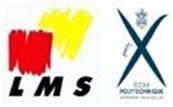 The Solid Mechanics Laboratory is a Joint Research Unit under the supervision of the École Polytechnique, the CNRS and the École des Mines ParisTech. His research field is the Mechanics of Continuous Media, studied at various scales, with a triple point of view: theoretical, experimental and numerical. The laboratory’s objective is to propose, build, analyze and validate thermodynamically coherent models experimentally and numerically in order to meet major scientific and technical challenges in the fields of energy, transport and mechanics for life. The laboratory is particularly active in the field of underground storage, and in particular the study of the long-term behaviour and low load of the geomaterials concerned.
The Solid Mechanics Laboratory is a Joint Research Unit under the supervision of the École Polytechnique, the CNRS and the École des Mines ParisTech. His research field is the Mechanics of Continuous Media, studied at various scales, with a triple point of view: theoretical, experimental and numerical. The laboratory’s objective is to propose, build, analyze and validate thermodynamically coherent models experimentally and numerically in order to meet major scientific and technical challenges in the fields of energy, transport and mechanics for life. The laboratory is particularly active in the field of underground storage, and in particular the study of the long-term behaviour and low load of the geomaterials concerned.
Laboratoire de Météorologie Dynamique (LMD)
 The Dynamic Meteorology Laboratory (LMD) was created in 1968 at the initiative of Pierre Morel. It is located on three university sites: the École Polytechnique in Palaiseau, the École Normale Supérieure and the Université Pierre et Marie Curie in Paris. It has just under 200 employees, including a quarter of permanent researchers and teacher-researchers, a quarter of engineers, technicians and administrative staff, a quarter of doctoral students, and a quarter of post-doctoral students, visitors or interns. This laboratory is a member of the Institut Pierre Simon Laplace (IPSL), a federation of six public research laboratories in environmental sciences in Ile-de-France. LMD studies the dynamics of the atmosphere and atmospheric processes, both on Earth and on other planets. On Earth, the LMD focuses on climate variability, its evolution in relation to human activities, and air pollution. A strong emphasis is placed on understanding the underlying physical mechanisms. For this purpose, the LMD develops both theoretical approaches, instrumental developments for observation, and numerical modelling.
The Dynamic Meteorology Laboratory (LMD) was created in 1968 at the initiative of Pierre Morel. It is located on three university sites: the École Polytechnique in Palaiseau, the École Normale Supérieure and the Université Pierre et Marie Curie in Paris. It has just under 200 employees, including a quarter of permanent researchers and teacher-researchers, a quarter of engineers, technicians and administrative staff, a quarter of doctoral students, and a quarter of post-doctoral students, visitors or interns. This laboratory is a member of the Institut Pierre Simon Laplace (IPSL), a federation of six public research laboratories in environmental sciences in Ile-de-France. LMD studies the dynamics of the atmosphere and atmospheric processes, both on Earth and on other planets. On Earth, the LMD focuses on climate variability, its evolution in relation to human activities, and air pollution. A strong emphasis is placed on understanding the underlying physical mechanisms. For this purpose, the LMD develops both theoretical approaches, instrumental developments for observation, and numerical modelling.
Laboratoire d’Optique Atmosphérique
 LOA is a Joint Research Unit (UMR/CNRS 8518) whose work focuses on the propagation in the atmosphere of light received from the Sun and that emitted by the Earth’s surfaces and atmosphere. This work is part of the global climate study. A first objective is to quantify the role of visible and infrared radiation in the planet’s energy exchanges, in particular to specify the role of clouds in the Earth’s radiative balance, of which they are an essential factor. A second area of research concerns the global characterization of parameters directly related to climate change (clouds, aerosols, surfaces), using satellite observation. The work carried out in this context implements:
LOA is a Joint Research Unit (UMR/CNRS 8518) whose work focuses on the propagation in the atmosphere of light received from the Sun and that emitted by the Earth’s surfaces and atmosphere. This work is part of the global climate study. A first objective is to quantify the role of visible and infrared radiation in the planet’s energy exchanges, in particular to specify the role of clouds in the Earth’s radiative balance, of which they are an essential factor. A second area of research concerns the global characterization of parameters directly related to climate change (clouds, aerosols, surfaces), using satellite observation. The work carried out in this context implements:
- software development to simulate radiation transfer, using models of the earth-atmosphere system;
- the analysis of observations acquired by existing satellite sensors and the design of new satellite experiments;
- the implementation of field observation campaigns, using equipment developed by the laboratory, implemented on the ground or from aircraft, in order to validate models or analyse atmospheric processes.
Laboratoire PACTE
 Pacte (Politiques publiques, ACtion politique, Territoires) is a joint social science research unit that brings together politicians, geographers and urban planners, as well as sociologists, economists, lawyers and historians from the Grenoble site. The UMR brings together 120 permanent researchers and teacher-researchers, 27 engineers and technicians, and 208 doctoral students. The Pact works on the many facets of the emergence, institutionalization, evolution, consolidation or questioning of public policies, at all territorial levels. This unit brings together a large number of researchers specialized in collective action and its social interactions. Its large surface area makes it possible to bring out new themes aimed at both excellence in the disciplines represented and interdisciplinary fertilization, particularly on environmental issues.
Pacte (Politiques publiques, ACtion politique, Territoires) is a joint social science research unit that brings together politicians, geographers and urban planners, as well as sociologists, economists, lawyers and historians from the Grenoble site. The UMR brings together 120 permanent researchers and teacher-researchers, 27 engineers and technicians, and 208 doctoral students. The Pact works on the many facets of the emergence, institutionalization, evolution, consolidation or questioning of public policies, at all territorial levels. This unit brings together a large number of researchers specialized in collective action and its social interactions. Its large surface area makes it possible to bring out new themes aimed at both excellence in the disciplines represented and interdisciplinary fertilization, particularly on environmental issues.
Laboratoire de Physiologie Cellulaire et Végétale (LPCV) – Grenoble
The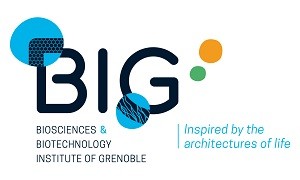 Laboratory of Cellular and Plant Physiology (LPCV) is a joint unit of the CNRS, CEA, INRA and the University of Grenoble Alpes. Founded in 1979 under the leadership of Professor Roland Douce, the LPCV has been a major player in plant biology research in France. The LPCV is composed of about 110 people and includes 8 teams each studying a unique aspect of plant biology, ranging from the regulation of genome expression (especially transcriptome and chloroplastic proteome), to metabolism (especially lipid), physiology, photosynthesis and development (especially floral development and cell morphogenesis). The LPCV is one of the units of the Institut de Biosciences et Biotechnologies de Grenoble (BIG).
Laboratory of Cellular and Plant Physiology (LPCV) is a joint unit of the CNRS, CEA, INRA and the University of Grenoble Alpes. Founded in 1979 under the leadership of Professor Roland Douce, the LPCV has been a major player in plant biology research in France. The LPCV is composed of about 110 people and includes 8 teams each studying a unique aspect of plant biology, ranging from the regulation of genome expression (especially transcriptome and chloroplastic proteome), to metabolism (especially lipid), physiology, photosynthesis and development (especially floral development and cell morphogenesis). The LPCV is one of the units of the Institut de Biosciences et Biotechnologies de Grenoble (BIG).
Laboratoire Science et Ingénierie des Matériaux et Procédés (SIMaP)
 The laboratory results from the refounding of 3 units in 2007, under the triple supervision of the UGA, Grenoble-INP and CNRS. SIMaP employs approximately 230 people, a third of whom are researchers and teacher-researchers, a fifth technical and administrative engineers and a hundred doctoral or post-doctoral students. This group of physicists, mechanics and material and fluid chemists studies the development, shaping, assembly and properties of materials for structural and functional applications by combining experimentation and modelling, from the atomic scale to the process scale, based on the mutualisation of experimental platforms for development and characterisation. Based on a detailed understanding of the mechanisms, SIMaP researchers design and optimize innovative production processes. They improve the properties of existing materials and develop the materials of the future. This research strategy coupling the building blocks elaboration – modeling – characterization – properties of use is one of the strong points of the laboratory which has organized itself so that the various disciplines present are interactive.
The laboratory results from the refounding of 3 units in 2007, under the triple supervision of the UGA, Grenoble-INP and CNRS. SIMaP employs approximately 230 people, a third of whom are researchers and teacher-researchers, a fifth technical and administrative engineers and a hundred doctoral or post-doctoral students. This group of physicists, mechanics and material and fluid chemists studies the development, shaping, assembly and properties of materials for structural and functional applications by combining experimentation and modelling, from the atomic scale to the process scale, based on the mutualisation of experimental platforms for development and characterisation. Based on a detailed understanding of the mechanisms, SIMaP researchers design and optimize innovative production processes. They improve the properties of existing materials and develop the materials of the future. This research strategy coupling the building blocks elaboration – modeling – characterization – properties of use is one of the strong points of the laboratory which has organized itself so that the various disciplines present are interactive.
Laboratoire SMS-ID
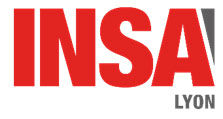 The SMS-ID laboratory was created in 2015 after the split of the LGCIE laboratory from INSA Lyon. This laboratory is located in the premises of INSA Lyon, it is composed of three complementary teams: geotechnics, materials and structures. Among the scientific orientations favoured in the laboratory, soil reinforcement is one of the themes particularly studied. The objectives of this research include an assumed applicative dimension, seeking to be as close as possible to industrial and societal needs: eco-material formulations, large-scale experimentation for civil engineering objects, and the implementation of digital models (finite and discrete element method) capable of reproducing the mechanical behaviour of civil engineering structures on a scale of 1. In support of this application-oriented research, it is important to highlight the emergence of more upstream research themes such as experimental and digital micromechanical approaches. One of the strong points of the research work carried out in the laboratory is the almost systematic comparison of numerical results with tests generally carried out at different scales in the laboratory. This experiment-model dialogue, which is tending to become more widespread in research laboratories, is fundamentally rooted in the culture of the laboratory.
The SMS-ID laboratory was created in 2015 after the split of the LGCIE laboratory from INSA Lyon. This laboratory is located in the premises of INSA Lyon, it is composed of three complementary teams: geotechnics, materials and structures. Among the scientific orientations favoured in the laboratory, soil reinforcement is one of the themes particularly studied. The objectives of this research include an assumed applicative dimension, seeking to be as close as possible to industrial and societal needs: eco-material formulations, large-scale experimentation for civil engineering objects, and the implementation of digital models (finite and discrete element method) capable of reproducing the mechanical behaviour of civil engineering structures on a scale of 1. In support of this application-oriented research, it is important to highlight the emergence of more upstream research themes such as experimental and digital micromechanical approaches. One of the strong points of the research work carried out in the laboratory is the almost systematic comparison of numerical results with tests generally carried out at different scales in the laboratory. This experiment-model dialogue, which is tending to become more widespread in research laboratories, is fundamentally rooted in the culture of the laboratory.
Laboratoire Sols & Environnement (LSE)
 The research activities of the Laboratoire Sols et Environnement (LSE) are finalized and focus on the engineering of highly anthropized soils, in response to the major anthropogenic pressures exerted on soil resources and in the context of ecosystem services. potentially rendered in particular by urban, mining and industrial soils. The joint research unit under the supervision of INRAE and the University of Lorraine, with 21 permanent staff, is focused on the functioning and evolution of soils within ecosystems strongly modified by human activities in order to propose ways of optimizing soil management. The unit is grouped around three thematic axes: dynamics of mineral and organic constituents Minéraux et Organiques d’origines Naturelle et Anthropique (MONA), Interactions fertilité/multi contamination et fonctionnement des Plantes et des Organismes (ISPO), Quantification et Optimisation de Services Écosystémiques ( TO DARE). The LSE is responsible for two specializations at ENSAIA in Sciences et Génie de l’Environnement (SGE), and in Protection des Cultures (Protec). The LSE is a host unit within the Doctoral School “Sciences et Ingénierie des Ressources Naturelles “, is integrated into the OTELo pole and the LabEx R21 of the Université de Lorraine, and is a partner of the GISFI (Groupement d’intérêt scientifique sur les friches industrielles). At the international level, the LSE established in 2015 an Laboratoire International Associé LIA Ecoland “Ecosystem services provided by contaminated lands” with the University of Sun Yat Sen (China, Canton). LSE researchers and teacher-researchers have also participated in the creation of 3 local start-ups (Microhumus, Econick and Sol & co) in connection with their research themes.
The research activities of the Laboratoire Sols et Environnement (LSE) are finalized and focus on the engineering of highly anthropized soils, in response to the major anthropogenic pressures exerted on soil resources and in the context of ecosystem services. potentially rendered in particular by urban, mining and industrial soils. The joint research unit under the supervision of INRAE and the University of Lorraine, with 21 permanent staff, is focused on the functioning and evolution of soils within ecosystems strongly modified by human activities in order to propose ways of optimizing soil management. The unit is grouped around three thematic axes: dynamics of mineral and organic constituents Minéraux et Organiques d’origines Naturelle et Anthropique (MONA), Interactions fertilité/multi contamination et fonctionnement des Plantes et des Organismes (ISPO), Quantification et Optimisation de Services Écosystémiques ( TO DARE). The LSE is responsible for two specializations at ENSAIA in Sciences et Génie de l’Environnement (SGE), and in Protection des Cultures (Protec). The LSE is a host unit within the Doctoral School “Sciences et Ingénierie des Ressources Naturelles “, is integrated into the OTELo pole and the LabEx R21 of the Université de Lorraine, and is a partner of the GISFI (Groupement d’intérêt scientifique sur les friches industrielles). At the international level, the LSE established in 2015 an Laboratoire International Associé LIA Ecoland “Ecosystem services provided by contaminated lands” with the University of Sun Yat Sen (China, Canton). LSE researchers and teacher-researchers have also participated in the creation of 3 local start-ups (Microhumus, Econick and Sol & co) in connection with their research themes.
Laboratoire Univers et Théories (LUTH)
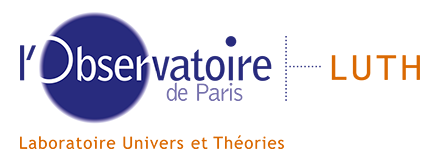 The Laboratoire Univers et Théories (LUTH) is a joint research unit of the CNRS, the Observatoire de Paris – Paris Sciences Lettres, and the Université Paris Diderot. The laboratory has a staff of about 80 people, including 34 statutory permanent researchers. His research activity concerns the theory and advanced modelling of astrophysical systems. LUTH focuses on intensive numerical computation and multidisciplinary research, two aspects of astrophysical research activity that are crucial today to achieving the objectives of this discipline. The research themes in the laboratory are diverse. They range from cosmology to extrasolar planets, including the study of black holes and compact objects, high-energy phenomena, hydrodynamics and plasmas present in astrophysical objects.
The Laboratoire Univers et Théories (LUTH) is a joint research unit of the CNRS, the Observatoire de Paris – Paris Sciences Lettres, and the Université Paris Diderot. The laboratory has a staff of about 80 people, including 34 statutory permanent researchers. His research activity concerns the theory and advanced modelling of astrophysical systems. LUTH focuses on intensive numerical computation and multidisciplinary research, two aspects of astrophysical research activity that are crucial today to achieving the objectives of this discipline. The research themes in the laboratory are diverse. They range from cosmology to extrasolar planets, including the study of black holes and compact objects, high-energy phenomena, hydrodynamics and plasmas present in astrophysical objects.
Météo France
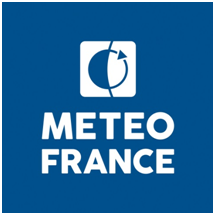 Météo-France is the national meteorological and climatological service. Its primary mission is to ensure the meteorological safety of people and property. This includes the development of a meteorological vigilance map showing dangerous phenomena, their consequences and the precautions to be taken to protect oneself. Météo-France’s basic missions include: – the development and maintenance of an observation network – the collection and processing of climatological data – weather forecasting – the preparation of climate projections – research in the fields of meteorology and climate – Météo-France serves three main types of customers: – government services (personal and property security) and defence – the aeronautics sector – professionals in various economic sectors (energy, local authorities, construction, etc.).
Météo-France is the national meteorological and climatological service. Its primary mission is to ensure the meteorological safety of people and property. This includes the development of a meteorological vigilance map showing dangerous phenomena, their consequences and the precautions to be taken to protect oneself. Météo-France’s basic missions include: – the development and maintenance of an observation network – the collection and processing of climatological data – weather forecasting – the preparation of climate projections – research in the fields of meteorology and climate – Météo-France serves three main types of customers: – government services (personal and property security) and defence – the aeronautics sector – professionals in various economic sectors (energy, local authorities, construction, etc.).
As an international reference service, Météo-France plays a significant role within the main meteorological cooperation bodies: the World Meteorological Organisation (WMO), the European Centre for Medium-Range Weather Forecasts (ECMMT), Eumetsat, the operator of European meteorological satellites, and Eumetnet, an administrative public institution (EPA) since 1993, Météo-France is currently under the supervision of the Ministry of Environment, Energy and the Sea.
CNRM
Météo-France and many foreign meteorological services, the processes of the atmosphere, the ocean, continental surfaces and the cryosphere, climate change, innovative observation techniques. It contributes to the maintenance of research infrastructures used by the entire scientific community. For more information see http://www.cnrm.meteo.fr
Météo et climat

The Weather and Climate Association is a 1901 law association, recognized as being of public utility. It was founded in 1852 under the name of Société Météorologique de France. The association is a place for communication, exchange and debate on climate change. It develops numerous actions of scientific mediation towards different audiences: symposia, cycles of conferences, exhibitions, etc.
Museum national d’Histoire naturelle – Département Histoire de la Terre
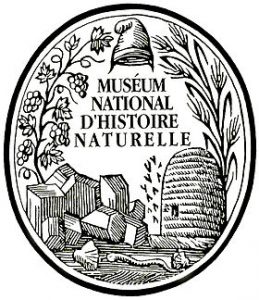 The purpose of the Earth History Department of the National Museum of Natural History is to study the history of life in relation to its physical framework, which is the Earth. It traces the evolution of the integrated biosphere in the context of the origin, formation and evolution of the planet. It covers the following topics: (a) origin and formation of the Earth (and terrestrial planets); (b) structuring of the Planet and mode of formation of the first continents; (c) history of life and interactions with environmental changes. These research themes are sometimes based on the collections of the MNHN. On the other hand, other systematic studies are directly linked to the collections and lead to the knowledge of the objects themselves (training, family ties). They have a role in the inventory of geodiversity and palaeobiodiversity. More generally, the Department must contribute to the dissemination of scientific knowledge. The origin of the Earth and Life and the evolution of Life on Earth are in high demand by society. Issues such as the origin of the solar system, climate variations, the extinction of dinosaurs or the origin of man are highly mediatized and highly recurrent topics. The Museum must be able to respond to this demand and provide scientifically irreproachable information that is accessible to the general public.
The purpose of the Earth History Department of the National Museum of Natural History is to study the history of life in relation to its physical framework, which is the Earth. It traces the evolution of the integrated biosphere in the context of the origin, formation and evolution of the planet. It covers the following topics: (a) origin and formation of the Earth (and terrestrial planets); (b) structuring of the Planet and mode of formation of the first continents; (c) history of life and interactions with environmental changes. These research themes are sometimes based on the collections of the MNHN. On the other hand, other systematic studies are directly linked to the collections and lead to the knowledge of the objects themselves (training, family ties). They have a role in the inventory of geodiversity and palaeobiodiversity. More generally, the Department must contribute to the dissemination of scientific knowledge. The origin of the Earth and Life and the evolution of Life on Earth are in high demand by society. Issues such as the origin of the solar system, climate variations, the extinction of dinosaurs or the origin of man are highly mediatized and highly recurrent topics. The Museum must be able to respond to this demand and provide scientifically irreproachable information that is accessible to the general public.
Observatoire de la côte d’Azur
The Observatoire de la Côte d’Azur has about 400 astrophysicist and geophysics and a fair number of other scientists needed in astrophysical and geophysical studies, such as Fluid Dynamicists.
The Rachel Carson Center for Environment and Society
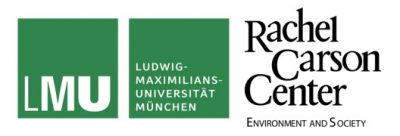 The Rachel Carson Center for Environment and Society (RCC) is an international, interdisciplinary center for research and education in the environmental humanities and social sciences. A nonprofit institution, the RCC was founded in 2009 as a joint initiative of Munich’s Ludwig-Maximilians-Universität and the Deutsches Museum, with the generous support of the German Federal Ministry of Education and Research.
The Rachel Carson Center for Environment and Society (RCC) is an international, interdisciplinary center for research and education in the environmental humanities and social sciences. A nonprofit institution, the RCC was founded in 2009 as a joint initiative of Munich’s Ludwig-Maximilians-Universität and the Deutsches Museum, with the generous support of the German Federal Ministry of Education and Research.
Santé Publique France
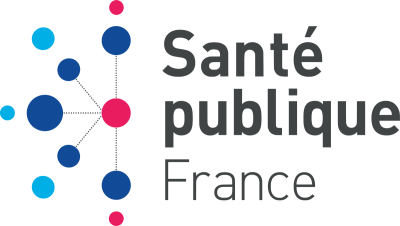 Public Health France is the national public health agency. Created in May 2016 by ordinance and decree, it is a public administrative establishment under the supervision of the Ministry of Health. Our mission: to improve and protect the health of populations. This mission revolves around three major axes: anticipate, understand and act. In conjunction with the actors in the field whom it helps to lead and coordinate, the agency produces scientific expertise in independent public health for the protection and improvement of the health of populations on which it bases its programming approach, plans its interventions and arbitrates its means. This knowledge is made available to the competent authorities to inform health policies, preserve and promote health. Acting both on the determinants and towards the populations, Public Health France places the consideration of social inequalities in health at the heart of its work approach.
Public Health France is the national public health agency. Created in May 2016 by ordinance and decree, it is a public administrative establishment under the supervision of the Ministry of Health. Our mission: to improve and protect the health of populations. This mission revolves around three major axes: anticipate, understand and act. In conjunction with the actors in the field whom it helps to lead and coordinate, the agency produces scientific expertise in independent public health for the protection and improvement of the health of populations on which it bases its programming approach, plans its interventions and arbitrates its means. This knowledge is made available to the competent authorities to inform health policies, preserve and promote health. Acting both on the determinants and towards the populations, Public Health France places the consideration of social inequalities in health at the heart of its work approach.
Société Française pour l’Etude et la Protection des Mammifères (SFEPM)
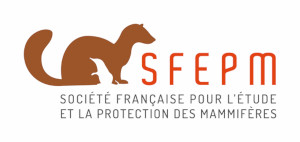 The Société Française pour l’Etude et la Protection des Mammifères (SFEPM) aims to know, promote and protect mammals and their habitats throughout the national territory, metropolitan France and overseas departments and territories. The association (law of 1901) was created in 1977. Its first mission was to produce the first atlas of wild mammals in France (published in 1984). The philosophy of the association is the conservation of wild mammal species and their habitats, in a changing world where human-mammal cohabitation has become inevitable. It develops its action around three axes: knowledge, protection and conservation, and information and awareness. The SFEPM is approved for the protection of nature at the national level and has around 500 direct members and more than 10,000 indirect members through more than forty member associations. It is a member of the Union Internationale pour la Conservation de la Nature (UICN) – France as well as of the Fédération Française des Sociétés de Sciences Naturelles (FFSSN). Finally, the Board of Directors and the salaried team of the SFEPM bring together specialists in wild mammals (amateurs or professionals): scientists, naturalists, veterinarians, actors in the study and conservation of fauna, etc.
The Société Française pour l’Etude et la Protection des Mammifères (SFEPM) aims to know, promote and protect mammals and their habitats throughout the national territory, metropolitan France and overseas departments and territories. The association (law of 1901) was created in 1977. Its first mission was to produce the first atlas of wild mammals in France (published in 1984). The philosophy of the association is the conservation of wild mammal species and their habitats, in a changing world where human-mammal cohabitation has become inevitable. It develops its action around three axes: knowledge, protection and conservation, and information and awareness. The SFEPM is approved for the protection of nature at the national level and has around 500 direct members and more than 10,000 indirect members through more than forty member associations. It is a member of the Union Internationale pour la Conservation de la Nature (UICN) – France as well as of the Fédération Française des Sociétés de Sciences Naturelles (FFSSN). Finally, the Board of Directors and the salaried team of the SFEPM bring together specialists in wild mammals (amateurs or professionals): scientists, naturalists, veterinarians, actors in the study and conservation of fauna, etc.
Sol & co
 Sol & co (www.sol-et-co.com) is a consultancy design office made up of a team of scientific experts specializing in pedology, soil biology and town planning, which supports regional planners in the ‘study, preservation and optimization of the agronomic characteristics (physical, chemical and biological) of soils through quality diagnostics. This company is the result of scientific discussions undertaken by the 5 co-founders within the Soils and Environment Laboratory (University of Lorraine, Inra) and the Institute of Urbanism and Regional Planning (Aix-Marseille University). One of the specificities of Sol & co is to be able to study all the biodiversity of soils (microbial, faunistic and plant), according to methods resulting from research. A major part of Sol & co’s activity consists of formulating decision-making support for stakeholders in land use planning on subjects related to soils, their biodiversity, nature in the city, urban agriculture. or even gardening practices. This Nancy start-up has received various distinctions such as the Meurthe-et-Moselle environmental trophy (2019), the entrepreneurial prize for the ecological transition of the city of Nancy, the regional and national PEPITE awards (2019) as well as the 1st prize Researchers Entrepreneurs Challenges du Grand Est (2019).
Sol & co (www.sol-et-co.com) is a consultancy design office made up of a team of scientific experts specializing in pedology, soil biology and town planning, which supports regional planners in the ‘study, preservation and optimization of the agronomic characteristics (physical, chemical and biological) of soils through quality diagnostics. This company is the result of scientific discussions undertaken by the 5 co-founders within the Soils and Environment Laboratory (University of Lorraine, Inra) and the Institute of Urbanism and Regional Planning (Aix-Marseille University). One of the specificities of Sol & co is to be able to study all the biodiversity of soils (microbial, faunistic and plant), according to methods resulting from research. A major part of Sol & co’s activity consists of formulating decision-making support for stakeholders in land use planning on subjects related to soils, their biodiversity, nature in the city, urban agriculture. or even gardening practices. This Nancy start-up has received various distinctions such as the Meurthe-et-Moselle environmental trophy (2019), the entrepreneurial prize for the ecological transition of the city of Nancy, the regional and national PEPITE awards (2019) as well as the 1st prize Researchers Entrepreneurs Challenges du Grand Est (2019).
UMR 7179 « Mécanismes Adaptatifs et Évolution »
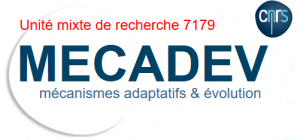 The Joint Research Unit 7179 “Adaptive Mechanisms and Evolution” (CNRS/MNHN) is headed by Fabienne Aujard assisted by a deputy director, Anick Abourachid, head of the unit’s Paris site, and a deputy director, Pierre-Michel Forget. The UMR consists of three research teams BIOADAPT, ECOTROP and FUNEVOL and several technical platforms. The research of UMR 7179 “Adaptive Mechanisms and Evolution” is part of the biology of integrated systems and involves a functional approach to the adaptation mechanisms of living organisms to environmental constraints. Based on the shape/function/environment relationships of current and fossil species, there is also a search for the origin and evolution of living organisms. Studies on the adaptive capacities and resilience of organizations and communities to environmental change make it possible to identify the mechanisms that contribute to the maintenance of biodiversity, to understand the risks of its vulnerability and, through knowledge of its dynamics, to define strategies for sustainable management. Finally, research is opening up to technological developments (robotics) and applications in the biomedical field (ageing, pathologies) and provides important perspectives for sustainable biodiversity management.
The Joint Research Unit 7179 “Adaptive Mechanisms and Evolution” (CNRS/MNHN) is headed by Fabienne Aujard assisted by a deputy director, Anick Abourachid, head of the unit’s Paris site, and a deputy director, Pierre-Michel Forget. The UMR consists of three research teams BIOADAPT, ECOTROP and FUNEVOL and several technical platforms. The research of UMR 7179 “Adaptive Mechanisms and Evolution” is part of the biology of integrated systems and involves a functional approach to the adaptation mechanisms of living organisms to environmental constraints. Based on the shape/function/environment relationships of current and fossil species, there is also a search for the origin and evolution of living organisms. Studies on the adaptive capacities and resilience of organizations and communities to environmental change make it possible to identify the mechanisms that contribute to the maintenance of biodiversity, to understand the risks of its vulnerability and, through knowledge of its dynamics, to define strategies for sustainable management. Finally, research is opening up to technological developments (robotics) and applications in the biomedical field (ageing, pathologies) and provides important perspectives for sustainable biodiversity management.
UMR METIS 7619 « Mécanismes Adaptatifs et Évolution »
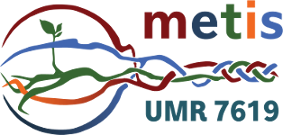 The METIS Joint Research Unit (Environmental Environments, Transfers and Interactions in Hydrosystems and Soils) was created in January 2014, as a merger of the Sisyphus RMU and a team specialized in organic geochemistry from the BioEMCo RMU, based at the Pierre and Marie Curie University in Paris, it also includes researchers, lecturers and technicians from the CNRS and EPHE. Our unit is mainly interested in “Continental Surfaces”, the circulation of water, elements and pollutants in environments that can be highly impacted by humans but which are also a sensitive and essential resource for the development of society.
The METIS Joint Research Unit (Environmental Environments, Transfers and Interactions in Hydrosystems and Soils) was created in January 2014, as a merger of the Sisyphus RMU and a team specialized in organic geochemistry from the BioEMCo RMU, based at the Pierre and Marie Curie University in Paris, it also includes researchers, lecturers and technicians from the CNRS and EPHE. Our unit is mainly interested in “Continental Surfaces”, the circulation of water, elements and pollutants in environments that can be highly impacted by humans but which are also a sensitive and essential resource for the development of society.
UMR PVBMT (Unité Mixte de Recherche Peuplements Végétaux et Bioagresseurs en Milieu Tropical)
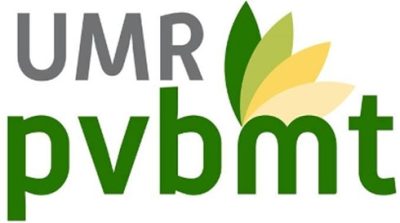 L’UMR PVBMT (Unité Mixte de Recherche Peuplements Végétaux et Bioagresseurs en Milieu Tropical) est organisée en trois équipes thématiques en milieu tropical : (1) la génomique et l’épidémiologie des agents pathogènes ; (2) la diversité et l’utilisation des ressources génétiques ; (3) les dynamiques écologiques en milieu insulaire. Dans cette dernière équipe, nous sommes un petit groupe de chercheurs à travailler sur les écosystèmes forestiers indigènes, avec comme principaux axes : les invasions biologiques, la diversité le long des gradients environnementaux, les interactions mutualistes plantes-animaux et le rôle des bryophytes dans les écosystèmes. Les enjeux de conservation étant considérables, nos recherches sont en lien étroit avec les acteurs de la conservation, notamment le Parc national de La Réunion.
L’UMR PVBMT (Unité Mixte de Recherche Peuplements Végétaux et Bioagresseurs en Milieu Tropical) est organisée en trois équipes thématiques en milieu tropical : (1) la génomique et l’épidémiologie des agents pathogènes ; (2) la diversité et l’utilisation des ressources génétiques ; (3) les dynamiques écologiques en milieu insulaire. Dans cette dernière équipe, nous sommes un petit groupe de chercheurs à travailler sur les écosystèmes forestiers indigènes, avec comme principaux axes : les invasions biologiques, la diversité le long des gradients environnementaux, les interactions mutualistes plantes-animaux et le rôle des bryophytes dans les écosystèmes. Les enjeux de conservation étant considérables, nos recherches sont en lien étroit avec les acteurs de la conservation, notamment le Parc national de La Réunion.
University of Chinese Academy of Sciences (UCAS)
Located in Beijing, the University of Chinese Academy of Sciences (UCAS) was established with the approval of the Ministry of Education of the People’s Republic of China. Its predecessor, the Graduate University of Chinese Academy of Sciences (GUCAS), was the first graduate school in China, granting the nation’s first PhD degrees in science, engineering, to a female student, and double PhD degrees. Renamed UCAS in June 2012, it now has four campuses (Yuquanlu, Zhongguancun, Olympic Village, and Yanqi Lake) and has educated nearly 200,000 students by December 2021. UCAS follows the philosophy of “The Fusion of Scientific Research and Teaching” fully supported by CAS in management, education, faculty, training, and research. Embracing its motto “Knowledge, Devotion, Investigation, Virtue” and the CAS tradition of “Science, Democracy, Patriotism, and Dedication” UCAS focuses on helping students lay a solid foundation for future scientific research and developing innovation, practicality, cooperation, and social responsibility.
University of Western Brittany (UBO)
 Fundamentally multidisciplinary, the University of Western Brittany (UBO) has about thirty research units, half of which are affiliated with a public scientific and technological establishment (CNRS, INSERM, IRD) and/or a public industrial establishment (Ifremer) and some of which are associated with a university hospital. The organization into four research areas: Marine, Human and Social Sciences, Numerical/Mathematical, and Health/Agro-Material, with which four research institutes are associated, encourages interdisciplinary exchanges and the emergence of innovative research projects. Resolutely focused on innovation and development, research at the UBO focuses on themes that are relevant to the problems of modern society, such as health and sustainable development.
Fundamentally multidisciplinary, the University of Western Brittany (UBO) has about thirty research units, half of which are affiliated with a public scientific and technological establishment (CNRS, INSERM, IRD) and/or a public industrial establishment (Ifremer) and some of which are associated with a university hospital. The organization into four research areas: Marine, Human and Social Sciences, Numerical/Mathematical, and Health/Agro-Material, with which four research institutes are associated, encourages interdisciplinary exchanges and the emergence of innovative research projects. Resolutely focused on innovation and development, research at the UBO focuses on themes that are relevant to the problems of modern society, such as health and sustainable development.
Université catholique de Louvain
 The Earth and Climate Centre (ELIC) of the Earth and Life Institute (ELI) of the Catholic University of Louvain specialises in the study of the Earth and in particular its climate. It currently has 14 professors and 80 researchers. Over the years, he has produced climate studies focusing on the latest ice and interglacial cycles, climate variability and changes during the Holocene (including the last millennium and the abrupt cooling that took place 8200 years ago), interannual climate variability in recent decades and future climate change. Current climate research activities include (1) past climate change, (2) the current state of the Earth system, (3) human-environment interactions and (4) modelling tools.
The Earth and Climate Centre (ELIC) of the Earth and Life Institute (ELI) of the Catholic University of Louvain specialises in the study of the Earth and in particular its climate. It currently has 14 professors and 80 researchers. Over the years, he has produced climate studies focusing on the latest ice and interglacial cycles, climate variability and changes during the Holocene (including the last millennium and the abrupt cooling that took place 8200 years ago), interannual climate variability in recent decades and future climate change. Current climate research activities include (1) past climate change, (2) the current state of the Earth system, (3) human-environment interactions and (4) modelling tools.
Unité de Production Hydraulique Alpes
 The Alpes Hydraulic Production Unit is in charge of operating and maintaining EDF’s hydroelectric installations (Electricité de France) in the Northern Alps (departments of Haute Savoie, Savoie, Isère, Drôme), i.e. 130 plants and 7500 MW of installed capacity, a third of EDF’s hydroelectric fleet in Metropolitan France.
The Alpes Hydraulic Production Unit is in charge of operating and maintaining EDF’s hydroelectric installations (Electricité de France) in the Northern Alps (departments of Haute Savoie, Savoie, Isère, Drôme), i.e. 130 plants and 7500 MW of installed capacity, a third of EDF’s hydroelectric fleet in Metropolitan France.
Université de Nice Sophia Antipolis
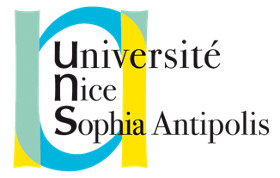 The University of Nice – Sophia-Antipolis is a multidisciplinary university within which the Plant Biology Laboratory directed by Professor Jean Rigaud has developed on the Valrose campus in Nice. Having received the support of the CNRS since 1982 and benefiting from the use of a greenhouse and a culture chamber, the laboratory has devoted itself to studying the functioning of the symbiosis Leguminous – Rhizobium using mainly soya and beans (nodular energy, metabolite exchanges between symbiotic partners, role of a plant haemoprotein, leghaemoglobin…). He then turned to alfalfa and the Medicago truncatula model plant for which many molecular tools were available. The laboratory actively participated in the creation, in 2004, of the INRA – CNRS – University of Nice-Sophia Antipolis Joint Research Unit “Biotic Interactions and Plant Health” which saw it merge with the INRA Research Centre in Antibes. This research unit, located in Sophia-Antipolis and now entitled “Sophia Agrobiotech”, studies in particular the biotic interactions of plants, both at the foliar and root level (nematodes, fungi, insects, etc.) and enjoys very good international visibility.
The University of Nice – Sophia-Antipolis is a multidisciplinary university within which the Plant Biology Laboratory directed by Professor Jean Rigaud has developed on the Valrose campus in Nice. Having received the support of the CNRS since 1982 and benefiting from the use of a greenhouse and a culture chamber, the laboratory has devoted itself to studying the functioning of the symbiosis Leguminous – Rhizobium using mainly soya and beans (nodular energy, metabolite exchanges between symbiotic partners, role of a plant haemoprotein, leghaemoglobin…). He then turned to alfalfa and the Medicago truncatula model plant for which many molecular tools were available. The laboratory actively participated in the creation, in 2004, of the INRA – CNRS – University of Nice-Sophia Antipolis Joint Research Unit “Biotic Interactions and Plant Health” which saw it merge with the INRA Research Centre in Antibes. This research unit, located in Sophia-Antipolis and now entitled “Sophia Agrobiotech”, studies in particular the biotic interactions of plants, both at the foliar and root level (nematodes, fungi, insects, etc.) and enjoys very good international visibility.
INSERM Unité Inflammation, Chimiokines & Immunopathologie
 The INSERM U996 unit entitled: Inflammation, Chemokines&Immunopathology groups together 3 teams whose themes aim to understand inflammatory and/or immune deregulations in different diseases including allergic asthma, papillomavirus infections, lupus erythematosus or in our case inflammatory liver diseases. This unit is attached to the Université Paris-Sud and the campus of the Université Paris-Saclay. This unit belongs to the Laboratory of Excellence in Drug Research and Therapeutic Innovation (Labex-LERMIT). The team also belongs to the University Hospital Department (DHU) of the Assistance Publique – Hôpitaux de Paris.
The INSERM U996 unit entitled: Inflammation, Chemokines&Immunopathology groups together 3 teams whose themes aim to understand inflammatory and/or immune deregulations in different diseases including allergic asthma, papillomavirus infections, lupus erythematosus or in our case inflammatory liver diseases. This unit is attached to the Université Paris-Sud and the campus of the Université Paris-Saclay. This unit belongs to the Laboratory of Excellence in Drug Research and Therapeutic Innovation (Labex-LERMIT). The team also belongs to the University Hospital Department (DHU) of the Assistance Publique – Hôpitaux de Paris.
Université de Genève
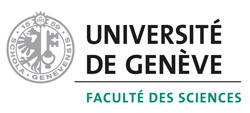 The University of Geneva was founded in 1559 and has been one of the 100 best universities in the world for many years. The Institute of Environmental Sciences (ISE) is a new inter-faculty entity created in 2009 to address complex environmental issues in a multidisciplinary way. Five faculties of the University are concerned by the ISE, namely Science, Social Sciences, Economics and Management, Law, and Medicine. The main missions of the ISE are research and teaching in the various interconnected branches of environmental sciences. Five priority areas bring together more than a hundred researchers from all walks of life: climate and climate impacts; water sciences; biodiversity; energy and energy efficiency; and sustainable development, urban planning and environmental governance. One of the main strengths of the ISE is the continuous dialogue between fundamental disciplines in order to find solutions to complex problems that cannot be solved by a single discipline. Although the ISE is a relatively young institute, it has managed to make its mark internationally, notably through the coordination of two major European projects under the EU’s 7th Framework Programme and its participation in many other projects under the 7th Framework Programme and the Horizon-2020 programme, and its partnerships with universities such as UCLA, the Université du Québec à Montréal, the University of Sydney, and the National University of Singapore, among others. Benefiting from a privileged location in Geneva, the second headquarters of international organizations after New York, the ISE has ongoing collaborations with UNEP (United Nations Environment Programme), WMO (World Meteorological Organization) and WHO (World Health Organization).
The University of Geneva was founded in 1559 and has been one of the 100 best universities in the world for many years. The Institute of Environmental Sciences (ISE) is a new inter-faculty entity created in 2009 to address complex environmental issues in a multidisciplinary way. Five faculties of the University are concerned by the ISE, namely Science, Social Sciences, Economics and Management, Law, and Medicine. The main missions of the ISE are research and teaching in the various interconnected branches of environmental sciences. Five priority areas bring together more than a hundred researchers from all walks of life: climate and climate impacts; water sciences; biodiversity; energy and energy efficiency; and sustainable development, urban planning and environmental governance. One of the main strengths of the ISE is the continuous dialogue between fundamental disciplines in order to find solutions to complex problems that cannot be solved by a single discipline. Although the ISE is a relatively young institute, it has managed to make its mark internationally, notably through the coordination of two major European projects under the EU’s 7th Framework Programme and its participation in many other projects under the 7th Framework Programme and the Horizon-2020 programme, and its partnerships with universities such as UCLA, the Université du Québec à Montréal, the University of Sydney, and the National University of Singapore, among others. Benefiting from a privileged location in Geneva, the second headquarters of international organizations after New York, the ISE has ongoing collaborations with UNEP (United Nations Environment Programme), WMO (World Meteorological Organization) and WHO (World Health Organization).
University of Lausanne
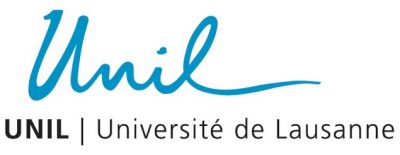 The Faculty of Law, Criminal Sciences and Public Administration of the Université de Lausanne has the unique feature of bringing together fields of study and research as varied as law, forensics, criminology and public administration. The Centre for Comparative, European and International Law (CDCEI) is an extension of the teaching of European law, private and public international law, comparative law and German, French and American law. It represents a place of research and documentation for doctoral students, lawyers and any interested person. The Comparativa collection – which includes 80 volumes – reflects the comparative research effort conducted under its auspices. The CDCEI hosts the MAS (LL.M.) in International and European Economic and Commercial Law (MAS in international and European economic and trade law).
The Faculty of Law, Criminal Sciences and Public Administration of the Université de Lausanne has the unique feature of bringing together fields of study and research as varied as law, forensics, criminology and public administration. The Centre for Comparative, European and International Law (CDCEI) is an extension of the teaching of European law, private and public international law, comparative law and German, French and American law. It represents a place of research and documentation for doctoral students, lawyers and any interested person. The Comparativa collection – which includes 80 volumes – reflects the comparative research effort conducted under its auspices. The CDCEI hosts the MAS (LL.M.) in International and European Economic and Commercial Law (MAS in international and European economic and trade law).
Université de Lorraine
 The University of Lorraine is the result of the merger in 2012 of the two Nancy universities, the INPL and the University of Metz. It brings together 60,000 students and nearly 4,000 teacher-researchers. Research at the University of Lorraine is organized around ten scientific centers bringing together sixty laboratories sometimes integrated into research federations. The theme “environmental constraints and tree physiology” is thus represented within the federative project Labex ARBRE (advanced research on tree biology and forest ecosystems), created in 2012, and which calls on disciplines as varied as biology, ecology, engineering sciences or forest economics. Led by the University of Lorraine, managed by INRAe and associating AgroParisTech, the Labex ARBRE also involves the National Office of Forests, the National Center for Forest Property, the Regional Center for Innovation and Transfer of Wood Technology and the European Forest Institute. Its aim is to study the functioning of forest ecosystems and their preservation in a context of global change and to help improve the value of forests. It brings together a scientific community of around 300 people spread over several laboratories including UMR SILVA University of Lorraine-AgroParisTech-INRAe.
The University of Lorraine is the result of the merger in 2012 of the two Nancy universities, the INPL and the University of Metz. It brings together 60,000 students and nearly 4,000 teacher-researchers. Research at the University of Lorraine is organized around ten scientific centers bringing together sixty laboratories sometimes integrated into research federations. The theme “environmental constraints and tree physiology” is thus represented within the federative project Labex ARBRE (advanced research on tree biology and forest ecosystems), created in 2012, and which calls on disciplines as varied as biology, ecology, engineering sciences or forest economics. Led by the University of Lorraine, managed by INRAe and associating AgroParisTech, the Labex ARBRE also involves the National Office of Forests, the National Center for Forest Property, the Regional Center for Innovation and Transfer of Wood Technology and the European Forest Institute. Its aim is to study the functioning of forest ecosystems and their preservation in a context of global change and to help improve the value of forests. It brings together a scientific community of around 300 people spread over several laboratories including UMR SILVA University of Lorraine-AgroParisTech-INRAe.
University of Montpellier – UMR DIADE
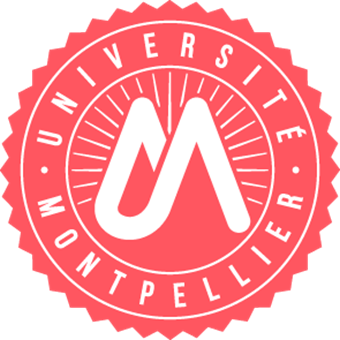
The University of Montpellier brings together 17 teaching structures, including 7 faculties of science and technology, and is attended by nearly 50,000 students each year. It participates in the activity of 73 research structures. Among these, the UMR DIADE (Diversity Adaptation and Development of plants; IRD, University of Montpellier, CIRAD) studies plant biodiversity, the mechanisms of adaptation of plants and their interactions with the environment, and explores the development plants to better understand the expression of traits and how they work. The study of agrobiodiversity makes it possible to characterize the exceptional plant diversity of the countries of the South with the aim of its preservation but also its enhancement by local societies and economic systems. Research on the adaptation mechanisms of plants and their interactions with the environment contributes to food security objectives to produce more and “better” in a context of global changes. The final objective is to achieve better sustainability of plant production, and to meet the expectations of the agroecological transition.
Université de Reims Champagne-Ardenne
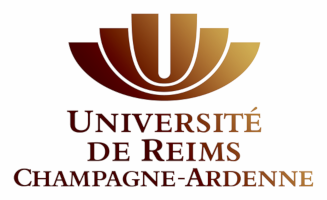 The University of Reims Champagne-Ardenne is developing a scientific project around 4 major poles with strong scientific expertise. A multidisciplinary pole with an international dimension in agro-sciences, environment, biotechnologies and bio-economy taking into account, in a territory with a strong agricultural and wine-growing economy, the agriculture of the future; a Health center, carrying scientific niches of excellence and a rich and varied medical and paramedical training offer; a digital and engineering sciences center around high performance computing, industry 4.0, materials and technological transformations; and a Humanities and Social Sciences pole with in particular the development of a new axis around the performing arts federated by the creation of a House of Human Sciences. It offers an attractive multidisciplinary training offer that meets current and future socio-economic needs, and aims to bring the student to the best level of training. The University of Reims Champagne-Ardenne in figures: 28,500 students, 2,500 staff, 30 research laboratories, 14 components, more than 120 diplomas.
The University of Reims Champagne-Ardenne is developing a scientific project around 4 major poles with strong scientific expertise. A multidisciplinary pole with an international dimension in agro-sciences, environment, biotechnologies and bio-economy taking into account, in a territory with a strong agricultural and wine-growing economy, the agriculture of the future; a Health center, carrying scientific niches of excellence and a rich and varied medical and paramedical training offer; a digital and engineering sciences center around high performance computing, industry 4.0, materials and technological transformations; and a Humanities and Social Sciences pole with in particular the development of a new axis around the performing arts federated by the creation of a House of Human Sciences. It offers an attractive multidisciplinary training offer that meets current and future socio-economic needs, and aims to bring the student to the best level of training. The University of Reims Champagne-Ardenne in figures: 28,500 students, 2,500 staff, 30 research laboratories, 14 components, more than 120 diplomas.
Universita di Roma
The University of Roma “Tor Vergata”, one of the three Universities in Roma, is located on the South-East of the city. The University has 13 departments. Research in the Physics Department includes astrophysics, applied physics, theoretical physics, high energy physics and condensed matter.
Université technique de Munich
 Founded in 1868, the Technical University of Munich (TUM) is one of the best universities in Europe. The university aims to be at the forefront of innovation and aims to find solutions to the main challenges that society faces over time. The university is a major European center for research and teaching, interdisciplinary education and the active promotion of promising young scientists. Faced with the loss of biodiversity and the degradation of ecosystem services, the research carried out at the Chair of Restoration Ecology aims to find new methods in conservation biology and ecological restoration. The main areas of research are restoration of wetlands, plant material used for restoration, biological invasions and global change. The lessons are focused on understanding the functioning of plant communities and the ecosystem processes that can be used for environmental planning and management and nature conservation.
Founded in 1868, the Technical University of Munich (TUM) is one of the best universities in Europe. The university aims to be at the forefront of innovation and aims to find solutions to the main challenges that society faces over time. The university is a major European center for research and teaching, interdisciplinary education and the active promotion of promising young scientists. Faced with the loss of biodiversity and the degradation of ecosystem services, the research carried out at the Chair of Restoration Ecology aims to find new methods in conservation biology and ecological restoration. The main areas of research are restoration of wetlands, plant material used for restoration, biological invasions and global change. The lessons are focused on understanding the functioning of plant communities and the ecosystem processes that can be used for environmental planning and management and nature conservation.





